

Hawaiian Islands (MAP + Detailed Guide)
Posted on Last updated: 14/08/2023
What pops into your head when you hear about the Hawaiian islands? If it is the tropical climate and the mesmerizing beaches, you’re absolutely correct! Hollywood blockbusters? Correct again! If it’s Moana – you’re still not wrong. Hawaii is an archipelago consisting of stunning islands and home to beautiful beaches.
But that’s not all that Hawaii has to offer to its visitors. In fact, many travellers are not aware of all the interesting facts surrounding Hawaii, its natural landscape and must-dos.
That’s why we are here to help you out. We figured you dropped in here for some inspiration for your travels. And we got you the crucial resources.
Let’s start by identifying the major Hawaiian islands on a map with names!
Related: Places To Visit in Hawaii?
Table of Contents
Map of Hawaiian Islands
Click the markers on the map to view the name of each island
How Many Hawaiian Islands Are There? How Many Can You Visit?
Consisting of a total of 137 islands and atolls, the Hawaiian archipelago is home to 8 major islands out of which 7 are inhabited; only 6 of these islands are accessible to tourists. These islands are Kauai, Maui (you probably would’ve heard this in Moana), Oahu, Lanai, Big Island Hawaii (yes, there’s an island called Hawaii in Hawaii) and Molokai.
We will be looking at these islands individually to give you the best experience!
By the way, did you know that Hawaii is a state of the United States? Non-US citizens whose countries are not in the visa waiver program are required to obtain a US visa to gain entry into Hawaii.
Let’s get to the topic now. Here are the 6 Hawaii Islands to visit this holiday! Get your sun hats, sunscreen and beach gear ready! We are diving into a tropical paradise!
Recommended: Small Towns to Visit in Hawaii | Is Uber Available in Hawaii?
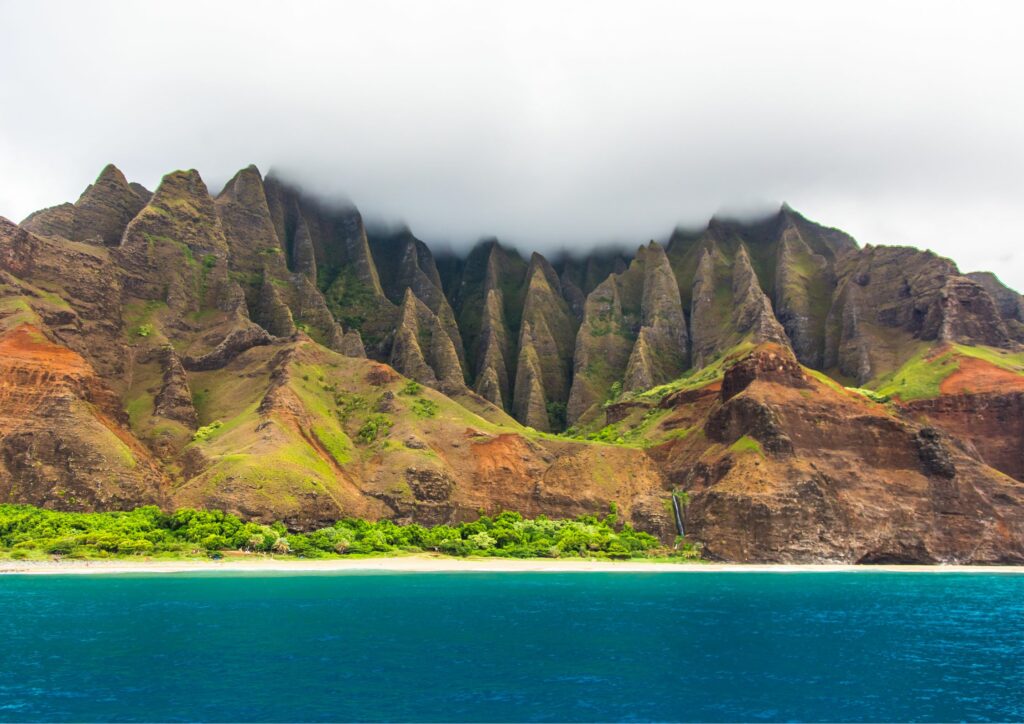
Known as the Garden Isle, Kauai is the fourth largest island belonging to Hawaii. The island is blessed with waterfalls , rainforests, dramatic cliffs, the Waimea canyon, Nounou trails and the breathtaking Na Pali coast.
Luxury? Say no more!
When it comes to tropical deluxe in the Aloha state, Kauai County is the go-to destination. Not only can you relax on the white shoreline, but you can also take a hike if you’re feeling too bored.
We must point out though that prices on this island can be a little bit on the expensive side.
Recommended reading: Why is Hawaii so Expensive?
Inspiration for Motunui
Are you a Disney fan? You would definitely be thrilled to know that the mountain of Motunui was inspired by the Nounou sleeping giant mountain.
Kauai’s shimmering white sand beaches and sugarcane fields, lined along the coconut coasts, create the perfect backdrop for any movie or photograph. If you’re visiting Hawaii, Kauai should definitely be included in your itinerary.
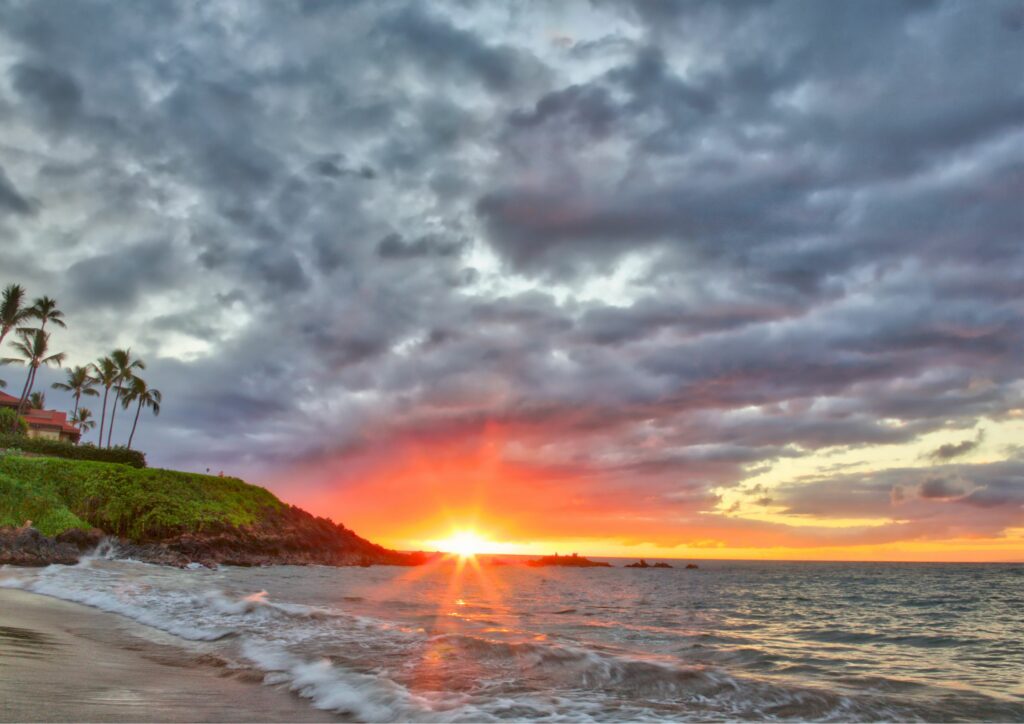
Maui Island – also known as the Valley Isle, is the second largest island in Hawaii. Famous for the Haleakala National Park and its towering volcano, Ohe’o Gulch waterfalls, the golden-crescent Kapalua, and the renowned sacred valley of Iao.
A little bit of everything
Here in Maui, you get to experience Hawaii in its purest form. An island that has its cultures inclusive, nature protected, and the experience enhanced for visitors. Adventure enthusiasts can sail down on a zipline or snorkel in the shallow waters with sea turtles. Those looking for something chic can even play a game of golf.
In Maui, you’ll get to see black sand beaches – somewhat of a unique feature. This phenomenon is caused by the volcanic minerals that rest beneath the surface. All in all, it sure does provide you with a little bit of everything.
Notable: The play of the Humpback Whales
The oceans of Maui Island are best known for humpback whales that swim close to the shallow waters during the winter season. Every year over 10,000 north pacific humpback whales migrate to the Maui waters splashing and playing in the warm waters.
The best time to watch whales in Maui is from November to May, with January being the peak month.
You might be interested in: Places To Visit in Maui
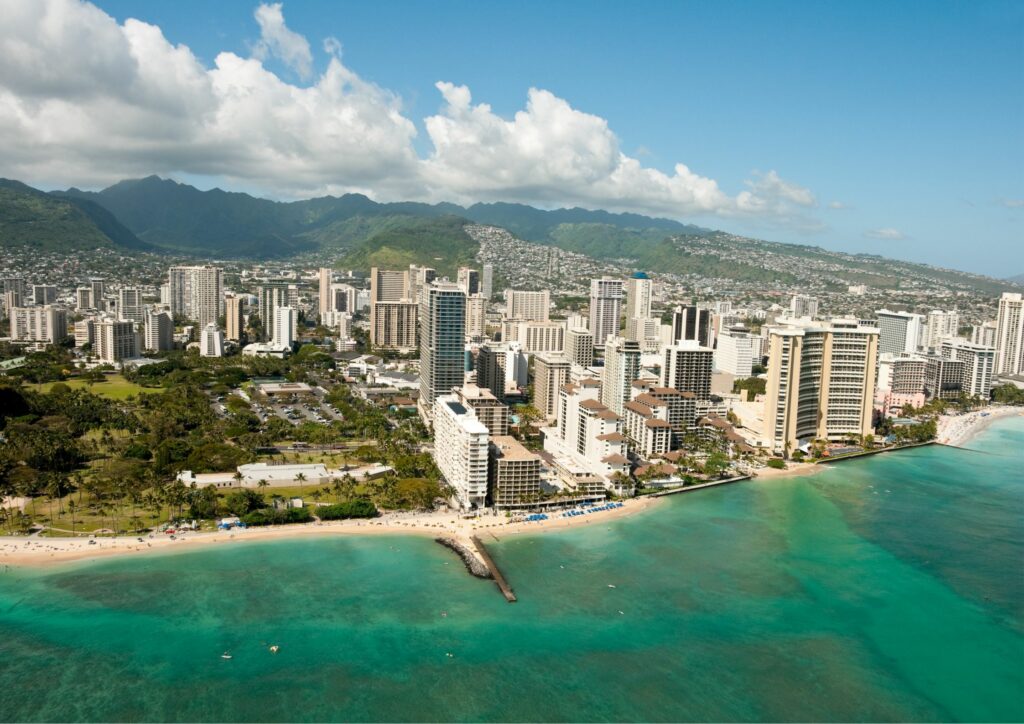
Are you a first-time traveller to Hawaii? Then Oahu should be your first island to visit in the state. Informally addressed as Honolulu by the majority, Oahu is the ideal place to kick off your Hawaiian vacation.
A bustling urban city with towering luxury resorts, Oahu is home to spectacular beaches as well as many historic sites; few are the Iolani Palace – a 19th-century native residence of Hawaii’s last monarch, and the Pearl Harbour Memorial.
Lively Nights
We must say that the nights in Oahu are just as lit as day. Due to the high density of resorts, the shore stretch comes to life after sunset. It’s not just commercialised, but resorts in Oahu – Hawaii in general – never fail to display their rich culture in hospitality.
While sipping a Mai Tai, you can watch a traditional Hawaiian dance and later sway to some hip music here in Oahu.
Do note that prices here can be on the high side, so make sure if you’re on a budget, to do your research and plan ahead to minimise unnecessary costs. All in all, Oahu is an amazing destination.
Learn More About Hawaii Size and Distance Statistics
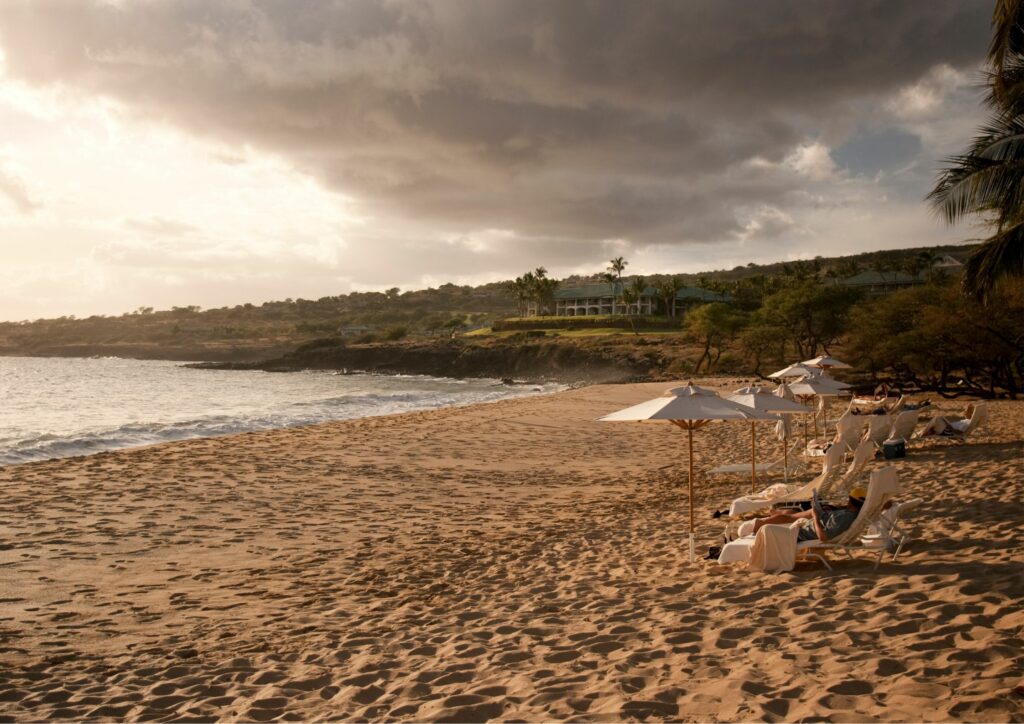
A tropical haven, Lanai is Hawaii’s gift from the gods. This island has sheer beauty, a wonderful atmosphere and a natural ecosystem. It explains why so many influential people are making their biggest bids to acquire this island. You’d be surprised to hear that almost 98% of Lanai is owned by one single tycoon – Larry Elison .
For the most exquisite vacation
There’s no doubt that Lanai is a holiday home for the VIPs, but that doesn’t mean it won’t welcome regular travellers. In fact, many travellers visit Lanai just for the exquisite experience that comes part and parcel with all the adventure activities such as exploring the remote beaches, discovering shipwrecks and trekking on off-path trails .
On that note, we bring to your attention, Kaiolohia, also known as Shipwreck Beach, is a must-visit location on the island of Lanai if you’re a history fan. Why so? First of all, you must know that getting there is not a simple walk to the beach.
Secondly, you are advised not to sunbathe or bathe in the waters here. But you will get to witness shipwrecks and debris from the World War II period.
If you want to see green turtles and humpback whales, set off to the Polihua beach in the northwest. It’s much more secluded and ideal for your sunbathing session.
Big Island Hawaii
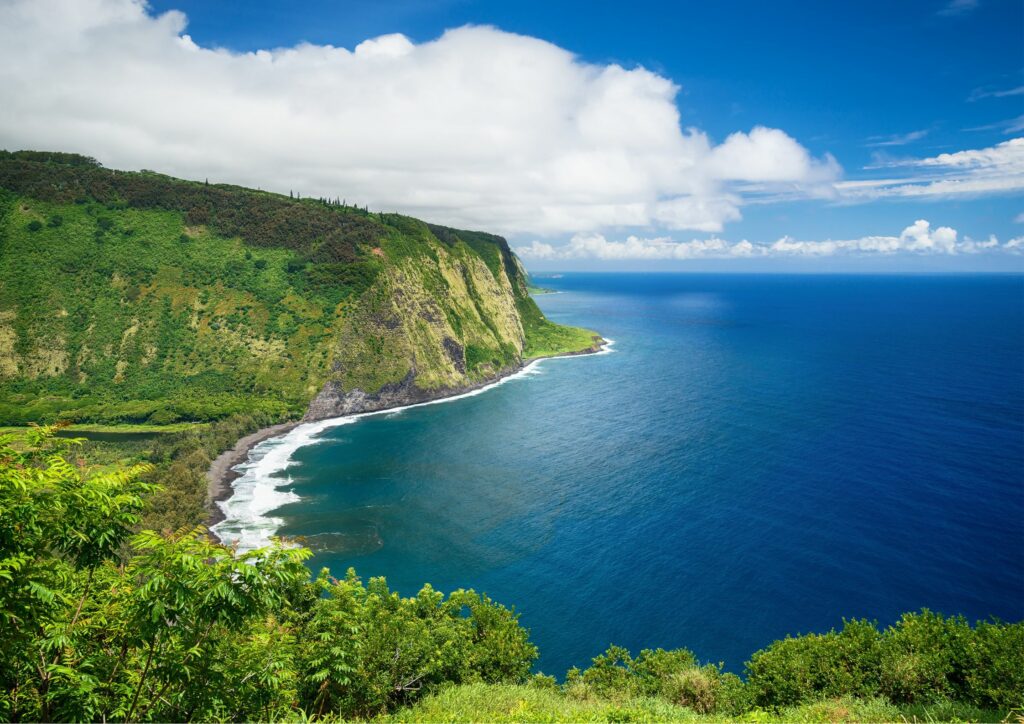
Big Island stands for its name – Big Island. Yes, it’s just big, and it’s the biggest of all the Hawaiian Islands. While the rest of the islands steal the limelight with their unique Aloha culture and tropical vibes, this destination often goes unnoticed.
It’s true, you wouldn’t be able to experience the authenticity of Hawaii here, but it’s not something you should miss on your vacation.
Garden of Hellfire
Big Island is known for its volcanoes. It’s home to the Hawaii Volcanoes National Park and the active volcano Kilauea which erupted back in 2018. That is, however, not a reason to miss out on this picturesque destination.
It has lush rainforests, dramatic waterfalls, stunning beaches, and it’s just.. big! So you have so many acres to explore. According to our experience, the best time to visit is from April to June, when the demands are somewhat low.
Hey! You get to save on your trip.
Coloured Beaches
The beaches in Big Island are known for their beautiful tropical aura and coloured sands. If you’re on a tour of the Big Island, make sure to visit Papakolea beach, where the sand is green like matcha.
When you visit Punalu’u, you’d encounter a distinct black sand beach. Both these phenomena occur due to minerals that emit from the volcanoes on the island.
Related: Things To Do in Kona (Big Island)
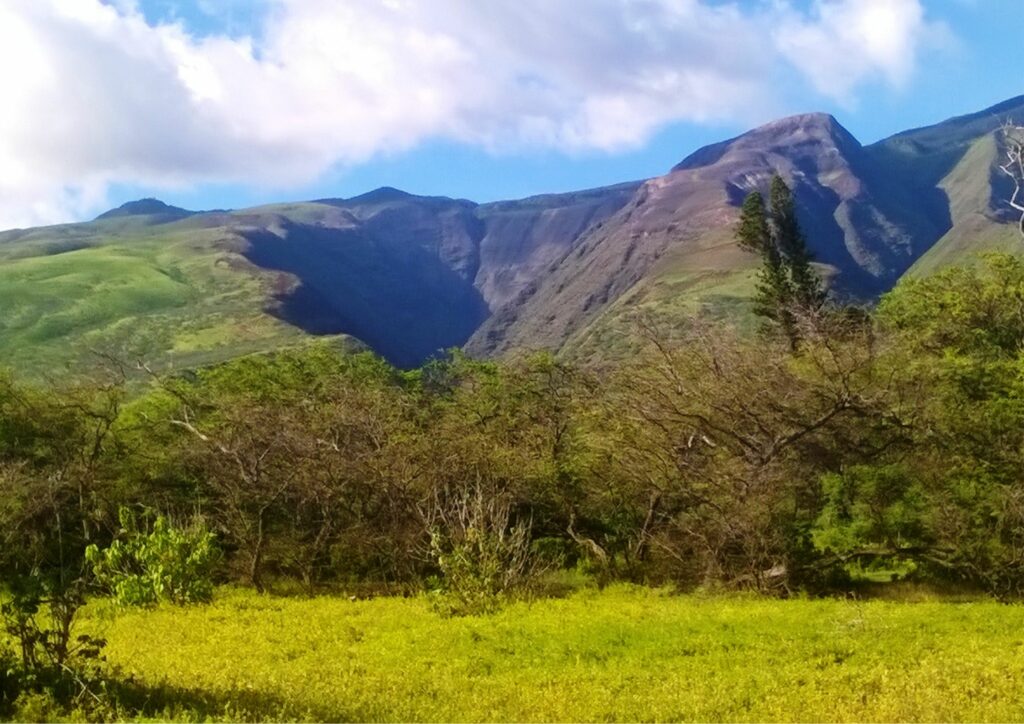
Hawaii’s fifth largest island, Molokai, is one of the least visited islands compared to the rest. It has vast acres of natural beauty and majestic cliffs – some of the highest in the world. But it rarely brings in tourists.
Here in Molokai, you can find Kalaupapa National Historical Park, which played a significant role during the late 19th century and the early 20th century in housing orphans and patients.
Today the historical destination stands as an educational site and can be reached via hiking, mule-riding, or a small commuter plane.
A Remote Retreat
Although the land of Molokai is breathtaking against the stunning natural landscapes, it is somewhat remote. With its towering sea cliffs and acres of lush lands, Molokai surely deserves recognition similar to its neighbouring islands.
Before it became this serene retreat, Molokai used to house disease patients, which is one reason that it distinguishes itself from the rest of the Hawaiian islands.
On our visit to this island, we had trouble finding a clear connection, but some resorts and hotels give you seamless access. However, just be prepared to get your feet muddy if you run out of connection.
Things You Need To Know About Hawaii
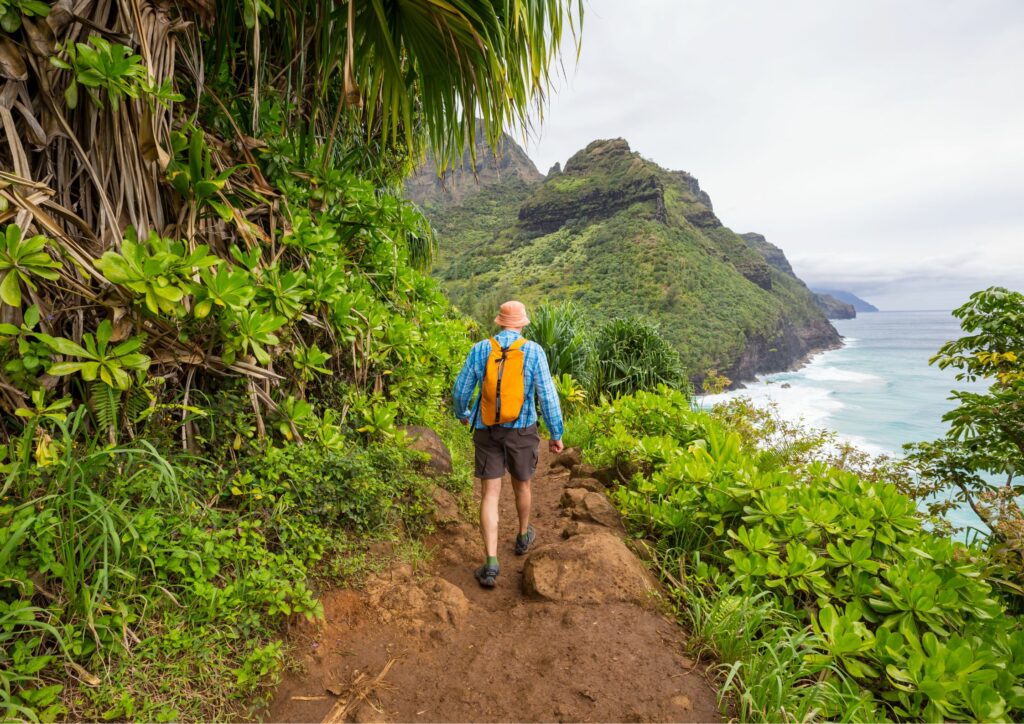
Wildlife in Hawaii
Hawaii is home to a diverse variety of both land and sea species. Most famous for its marine creatures, including the humpback whale, Hawaii is the perfect place to set off on an ocean wilderness expedition. You’d come across dolphins, sea turtles, monk seals and tiger sharks.
It was during our visit that we learnt that Hawaii does not house any dangerous predators. If any insect or a manta ray was to sting you, you’ll survive past a few wounds.
Recommended reading: Hawaiian Animals (All You Need To Know)
Hawaii Geography
We assure you that Hawaii is one of God’s playgrounds on Earth. The geographical landscapes of the archipelago are just mesmerizing. From volcanic peaks and rising sea cliffs to tropical jungles and breathtaking beaches, Hawaii is the go-to place for your tropical adventure.
The climate usually lingers around 31˚C during summer here and about 28˚C during winter.
Recommended reading: Ecosystems in Hawaii | Volcanoes in Hawaii
Hawaiian Cuisine
The Hawaiian cuisine – somewhat similar to Fijian meals – largely incorporates meaty dishes and taro prepared in multiple methods. Some of the most famous Hawaiian dishes to try are Kalua Pork, Laulau and Poi.
When you’re in the tourist hotspots, you’d easily come across franchise food but make sure you take the extra effort to taste some native delicacies. They really are worth experiencing.
Recommended reading: Hawaii Food
People of Hawaii
One thing that we noticed on our visit to Hawaii was the glee in people (most of them). It could be that the state is entirely associated with tourism that the people of Hawaii are required to show hospitality and make people feel welcomed.
Their laid-back culture and amazing local food, coupled with the experiences and beautiful places to visit make it any traveller’s dream destination.
Recommended reading: Useful Hawaiian Words and Phrases To Learn
Frequently Asked Questions About Hawaiian Islands
You may have particular questions about Hawaii, and we are here to answer them!
Which island is Honolulu on?
Located on the South shore of Oahu Island, Honolulu is the capital of Hawaii and one of the most famous cities in the state. In fact, many misinterpret the entire Oahu island as Honolulu.
The best time to go to Honolulu?
To secure attractive rates and avoid crowds, visit Honolulu between April and June or from September to December. You’d be able to experience all the capital city has to offer.
How many islands in Hawaii can you visit?
Although there are a total of eight major Islands in the Hawaiian archipelago, visitors are only allowed to visit six of them. Kauai, Maui, Oahu, Lanai, Big Island Hawaii and Molokai are open to tourists, while Niihau and Kahoolawe are forbidden to enter.
Why can’t you visit Niihau and Kahoolawe?
Niihau has been a privately owned island since 1864 and thus is considered a residence and not public property. Unless for a special case, visitors are not allowed to visit Niihau.
Visiting Kahoolawe is prohibited due to the constant volcanic threat which may put visitors in danger.
Can you visit Hawaii without a car?
Yes. You can easily move around the Hawaiian archipelago by boat, or by bus (on land), which are very efficient modes of transport. Read more on this here
You can get a glimpse into the local culture while visiting places spontaneously that wasn’t originally in your itinerary.

Afrah Fazlulhaq
Afrah is a writer/editor with over 7 years of hands-on experience working in the travel sector. Her love for adventures dates back to her childhood days, and it took flight when she joined the travel industry where she learned and discovered the nitty gritties of holidays and holiday-making.
She believes that a fulfilling journey is not about the destination, but the experiences we gain from the things that go right and wrong. When it comes to travel, there's no perfect itinerary. YOU make it perfect.

Maps of the Hawaiian Islands: Your Ultimate Guide to Navigating Hawaii
If you’ve ever dreamed of exploring the Hawaiian Islands, a detailed map is your first ticket to paradise. Maps of the Hawaiian Islands not only deliver precise geographical information but also provide an insightful glimpse into the rich history and vibrant culture of this tropical haven. Whether you’re planning a visit or simply indulging in some armchair travel, these maps are both an essential tool and a source of endless fascination.
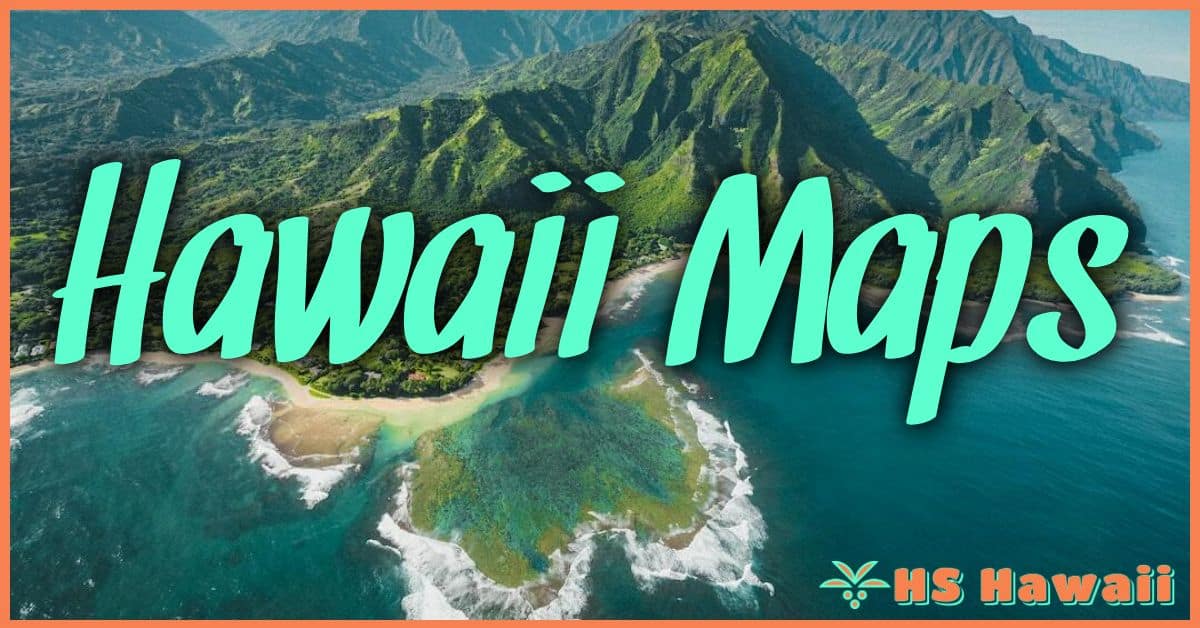
The beauty of Hawaii lies in its captivating diversity, with each island offering its own unique allure. From the bustling beaches of Oahu to the untouched wilderness on Kauai, every bit of this Pacific archipelago has something distinct to reveal. Understanding and appreciating this diversity becomes significantly easier when you have a comprehensive map at your disposal.
But it’s not just about geography – these maps paint a vivid picture of Hawaii’s past as well. They reflect centuries-old voyages by Polynesian navigators, European explorations, and important historical events that have shaped Hawaii into what it is today. With every glance at a map, you’re essentially taking a step back in time – unraveling stories that make up the fabric of this enchanting destination.
Big Island Map
Molokai Map
Kahoolawe Map
A Brief History of Hawaiian Island Maps
Let’s embark on a journey through time, tracing the evolution of Hawaiian Island maps. From their inception to the present day, these maps have undergone numerous transformations.
The earliest known map of the islands dates back to 1778 , when Captain James Cook first sailed into Hawaii’s waters. His crew’s cartographer produced rudimentary sketches that only hinted at Hawaii’s true geographical complexity.
Fast forward to the 19th century, explorers and missionaries started creating more detailed charts. They mapped out not just coastlines but also topographical features like mountains and valleys. Yet, these were still far from accurate by our modern standards.
In fact, it wasn’t until 1876 that an accurate map was created – thanks to Walter M Gibson’s efforts in conducting a comprehensive survey of all eight major islands:
- Hawaii (Big Island)
This marked a significant milestone in Hawaiian cartography.
As technology advanced into the 20th century, aerial photography gave birth to even more precise mapping techniques. Today, with satellite imagery and geospatial data analysis tools at your disposal, you can explore every nook and cranny of Hawaii from your living room!
Remember, while today’s digital maps offer incredible detail and accuracy; they’re built upon centuries’ worth of exploration and discovery. These historical maps tell a fascinating story about how our understanding of this tropical paradise has grown over time.
When you next examine a modern map of Hawaii – remember its rich history!
Noteworthy Features on Maps of the Hawaiian Islands
When you’re exploring maps of the Hawaiian Islands, there are certain features that immediately stand out. Let’s dive in and highlight some of these exceptional characteristics.
The iconic Volcanoes are one feature you can’t miss. Hawaii is home to several active volcanoes which have significantly shaped its landscape and ecology. Mauna Loa and Kilauea on Big Island, Haleakala on Maui, and Waianae and Koolau on Oahu are some noteworthy ones.
Hawaii’s unique Climate Zones also reflect prominently on its maps. You’ll find tropical rainforests, arid lands, temperate zones, snowy peaks – all within this compact cluster of islands! The island chain boasts 10 of the world’s 14 climate zones.
Another fascinating aspect to observe is the Marine Protected Areas (MPAs) . These areas help conserve marine life and habitats. Papahanaumokuakea Marine National Monument is one such MPA that encompasses much of the Northwestern Hawaiian Islands.
Of course, we must mention Hawaii’s extensive Trail System as well! It includes trails leading up volcanic slopes, through lush forests, across sandy beaches – offering endless adventures for outdoor enthusiasts.
Finally, keep an eye out for those small dots marking Cultural Sites . They signify ancient temples (Heiaus), royal palaces like Iolani Palace or significant landmarks like Pearl Harbor – invaluable insights into Hawaii’s rich history and culture!
So next time when you lay your eyes on a map of these paradise islands remember to look beyond mere lines and colors – each feature tells a tale about this spectacular destination!
Understanding Topographic Maps of Hawaii
Topographic maps, especially those of areas as geographically diverse as Hawaii, are rich resources. They’re not just maps —they’re in-depth representations of the terrain and physical features of an area. When you’re studying a topographic map of Hawaii, you’re looking at more than just land and water. You’re stepping into a world of volcanic mountains, lush valleys, and stunning coastlines.
Wondering what makes these maps so special? It’s their unique ability to show elevation on a two-dimensional surface. Using contour lines that connect points with the same elevation value, they give you a 3D perspective on a flat piece of paper or screen. This lets you comprehend the Hawaiian Islands’ varied terrain—from Mauna Loa’s towering peak to Waikiki’s sun-kissed shores—without ever leaving your seat.
If we break down these contour lines further:
- Close together lines indicate steep slopes
- Widely spaced lines represent gentle slopes
- Circles or loops suggest hilltops or depressions
The topography doesn’t stop there though! Color also plays an integral role in understanding these maps.
- Brown : Shows land contours like hills and valleys
- Blue : Represents water bodies such as lakes or oceans
- Green : Indicates vegetated areas
To fully harness this geographical goldmine, it’s crucial to know how to read coordinates too. Remember that topographic maps show both latitude (north-south) and longitude (east-west). In essence: Latitude , Longitude – always in this order!
Now armed with this knowledge, you can dive into exploring the Hawaiian Islands’ breathtaking landscapes from an entirely new perspective. Whether it’s planning your next hiking adventure up Kilauea Volcano or just satisfying geographic curiosity—learning how to understand topographic maps is your key to unlocking Hawaii’s natural wonders!
Interpreting Nautical Charts around Hawaii
When you’re navigating the waters around the Hawaiian Islands, you’ll find nautical charts to be your best friend. These maps of the sea can help guide you through tricky passages, alert you to potential hazards and aid in locating prime fishing spots.
Understanding these charts requires a bit of knowledge. Nautical charts often use symbols and abbreviations , which represent various features like depths, seabed types, navigational aids, and restricted areas. It’s critical that you familiarize yourself with these before setting sail.
For depth measurements on nautical charts, they’re usually in fathoms (1 fathom = 6 feet). But remember to check the units indicated on each chart because it may vary.
Color is also important when interpreting nautical charts. Here’s what some common colors mean:
- White: Deep water
- Blue: Shallow water
- Green: Areas with vegetation such as seaweed or grasses
Landmarks play a vital role too. They give pilots reference points for their location at sea. On Hawaiian nautical charts, landmarks might include lighthouses, radio towers or even tall buildings visible from the coast.
Tides are another crucial factor when interpreting Hawaiian nautical maps; knowing high tide times can make entering and exiting harbors safer and easier.
Finally, it’s worth noting that currents around Hawaii can be strong and change rapidly due to its island geography. Consult your chart for current direction indicators; arrows show direction while numbers indicate speed in knots.
Armed with this knowledge, you’ll have an easier time understanding how to navigate Hawaii’s waters using nautical charts safely!
The Role of Satellite Imagery in Mapping Hawaii
If you’ve ever used a map of the Hawaiian Islands, chances are it’s been enhanced by satellite imagery. Satellite technology has revolutionized mapping techniques worldwide and Hawaii is no exception.
Consider this: before satellites, cartographers relied on ground-based surveys to create maps. These were time-consuming and often led to inaccuracies. Since the advent of satellite imagery, however, we’ve seen a significant improvement in the precision and detail of maps.
Today’s high-resolution satellites capture images that provide an unparalleled view of Hawaii’s unique geography. They reveal not only land formations but also vegetation patterns, water bodies, and even human-made structures. This level of detail helps us understand the islands’ complex ecosystems better than ever before.
Satellite technology doesn’t just enhance our knowledge; it also aids practical applications. For instance:
- Emergency responders use these detailed maps to plan efficient routes during natural disasters like hurricanes or volcanic eruptions.
- Conservationists study changes in vegetation cover over time to inform their preservation efforts.
- Urban planners rely on them for infrastructure development while minimizing environmental impact.
Yet despite these advancements, there’s still room for growth when it comes to satellite-enabled mapping in Hawaii. Future developments might include more frequent image captures for real-time monitoring or even higher resolution imaging capabilities for finer details.
Remember though – while satellite imagery benefits map-making enormously, it doesn’t replace traditional methods entirely. Instead, it complements them by adding layers of data that weren’t available before satellites existed. So next time you scan a map of the Hawaiian Islands, appreciate how far we’ve come – and where satellite technology may take us tomorrow!
How to Read a Relief Map of the Hawaiian Islands
Navigating the nuanced terrain of relief maps can seem daunting at first, but don’t worry – you’re about to become an expert. When it comes to understanding a relief map of the Hawaiian Islands, there are key features you’ll need to focus on.
First and foremost, pay attention to color . Relief maps typically use various shades and hues to depict changes in landscape. Bright greens usually represent lower elevations while gradients into yellows, oranges, and reds tend to indicate increasing altitude. So if you’re looking at Hawaii’s Mauna Kea or Mauna Loa on a relief map, expect vibrant colors!
Contours are your next stop on this learning journey. These continuous lines that snake around your map aren’t there for decoration – they’re marking out the exact shape of the land! On your Hawaiian relief map, closely spaced contour lines will symbolize steep terrain like cliffs or mountainsides.
Let’s not forget about scale bars either. They’ll help you figure out distances between points on your map. By using them correctly, you’ll discover just how expansive Hawaii’s landscapes really are.
Here’s a quick breakdown:
- Colors : Indicate elevation levels
- Contour Lines : Show land shape
- Scale Bars : Provide distance information
Remember these tips and before long, reading a relief map of the Hawaiian Islands will be as easy as lounging on one of its beautiful beaches!
The Development and Use of Digital Maps in Hawaii
The digital mapping revolution is transforming the way we view and understand Hawaii. You’re no longer limited to paper charts or static images; nowadays, a wealth of dynamic, interactive maps provide comprehensive and up-to-date information about the Hawaiian Islands.
Digital maps have become an essential tool for various sectors in Hawaii. Tourism , one of the Island’s biggest industries, relies heavily on these digital resources. Tourists use them not only to navigate but also to discover attractions, find services, and plan their itineraries.
In addition to tourism, other industries are making good use of digital map technology. Here’s a quick glance at some significant applications:
- Real Estate : Realtors utilize interactive maps to showcase properties with geographic context.
- Transportation : Local authorities employ GIS (Geographic Information Systems) for traffic management.
- Environment Conservation : Scientists use digital mapping tools for environmental planning and preservation.
Furthermore, Digital maps play an increasingly crucial role in disaster management within Hawaii. The islands’ vulnerability to natural disasters like hurricanes and volcanoes necessitates efficient emergency response systems. Digital maps enable real-time tracking of disaster events and help coordinate effective responses.
Now let’s look at how the development of digital maps has progressed over the years in Hawaii:
This timeline provides a brief snapshot into how rapidly evolving technologies have shaped data gathering and visualization across Hawaiian landscapes.
So there you have it! The advent and evolution of digital mapping has proven instrumental in shaping modern-day Hawaii. Whether you’re planning your next vacation or studying geological transformations, you can count on these innovative tools to guide your way around this Pacific paradise!
Conservation and Environmental Mapping in Hawaii
In the Hawaiian Islands, environmental mapping plays a significant role. It’s an integral part of conservation efforts, helping to monitor, manage, and protect diverse ecosystems across the archipelago. With advanced technology like Geographic Information Systems (GIS), you’re able to access precise data about Hawaii’s environment.
One primary focus point is native species protection . Hawaii’s unique flora and fauna are under constant threat from invasive species and habitat loss. By using environmental maps, conservationists can track these issues in real time.
Mapping also aids in understanding climate change impact on the islands. Rising sea levels can spell disaster for coastal communities and map-based studies provide crucial insights into these trends.
Here are some key figures showing how many endangered species are being protected through mapping:
Moreover, let’s consider the island of Maui as an example:
- The Haleakala National Park uses mapping to manage its rich biodiversity.
- GIS technology helps monitor the park’s delicate ecosystem.
- Maps aid in identifying areas needing restoration or prone to wildfires.
So, when you think about it, environmental mapping isn’t just about creating pretty visuals—it’s a powerful tool for preserving Hawaii’s natural beauty for future generations. It allows us to see what we might otherwise overlook: patterns of deforestation, areas susceptible to erosion or potential habitats for reintroducing native species.
By seeing these realities laid out on a map—you begin comprehending their scale much more clearly than raw data alone could reveal. This way environmental stewardship becomes less overwhelming and more manageable—an endeavor where every little bit counts!
Remember that every time you look at a map of Hawaii—there’s so much more than meets the eye!
Unique Cultural Elements Visible on Hawaiian Island Maps
When you first glance at a map of the Hawaiian Islands , you’ll notice more than just geographical landmarks. The rich tapestry of Hawaiian culture is mirrored in these maps, setting them apart from other cartographic representations. Let’s take a closer look.
The Aloha Spirit seeps into every corner of Hawaii and it’s no different with their maps. Often, they incorporate native language place names, giving you an insight into the islanders’ deep respect for their heritage. For instance, ‘Mauna Kea’ – meaning ‘White Mountain’, reflects not only the physical characteristics but also the spiritual significance attached to these lands by Hawaiians.
On many Hawaiian island maps, you’ll spot symbols that represent important cultural elements such as heiaus (ancient temples) or royal palaces like Iolani Palace in Honolulu – a unique feature not found on mainland US maps! These markers tell tales of Hawaii’s regal past and its journey towards modern statehood.
An interesting aspect that stands out on Hawaiian Island maps are the ancient land divisions known as ahupuaʻa . These long, narrow sections typically stretching from mountains to sea were self-sustaining units providing all needs for their inhabitants – farming land, fishing waters and forest resources. You can actually see these demarcations on some detailed maps!
Also noticeable are intricate patterns resembling tribal tattoos or traditional quilt designs called kapa . They’re not merely decorative! These signify various aspects such as topography or rainfall patterns which contribute to diversity across islands.
To summarize:
- Native language place names reflecting cultural values
- Symbols representing integral parts of history like heiaus or royal palaces
- Ancient land division boundaries indicating sustainable living practices
- Kapa patterns denoting environmental conditions
Remember this: Maps of the Hawaiian Islands aren’t simply directional guides; they’re gateways opening up centuries-old narratives woven together by unique cultural threads. As you peruse these maps while planning your trip or exploring virtually, don’t forget to delve deeper than surface level geography.
Wrapping Up: The Evolution and Impact of Hawaiian Island Maps
You’ve journeyed with us through the rich history and evolution of Hawaiian Island maps. Now, let’s take a moment to appreciate their lasting impact.
Over the centuries, these maps have been more than navigational tools. They’ve shaped our understanding of Hawaii’s unique geography and culture. From the earliest Polynesian charts to today’s digital versions, each map tells a story about its time.
Consider how early cartographers relied on observations and local knowledge to craft their designs. Their work gave us valuable insights into how ancient Hawaiians interacted with their environment.
Fast forward to modern times, where technology has transformed mapping drastically. Digital maps allow for real-time updates, interactive features, and detailed satellite imagery. This makes it easier for you to explore Hawaii’s eight main islands – Kauai, Oahu, Molokai, Lanai, Maui, Kahoolawe, Big Island (Hawaii) – at your leisure or even plan your next vacation!
Let’s not forget about the educational value that these maps provide:
- They serve as visual aids in teaching geography.
- They give context to historical events.
- They help scientists monitor environmental changes over time.
In short, Hawaiian Island maps are an integral part of our world – bridging past and present while shaping future explorations.
As we close this chapter on Hawaiian Island maps remember this: A map is more than lines on paper or pixels on a screen. It’s a testament to human curiosity and ingenuity – constantly evolving just like the ever-changing landscapes it represents! So next time you view a map of the Hawaiian Islands think about its journey through history…and your own place within it!
Help us out by sharing this with your friends on social media!
About the author.

Hawaiian Ryan
More articles you might like....
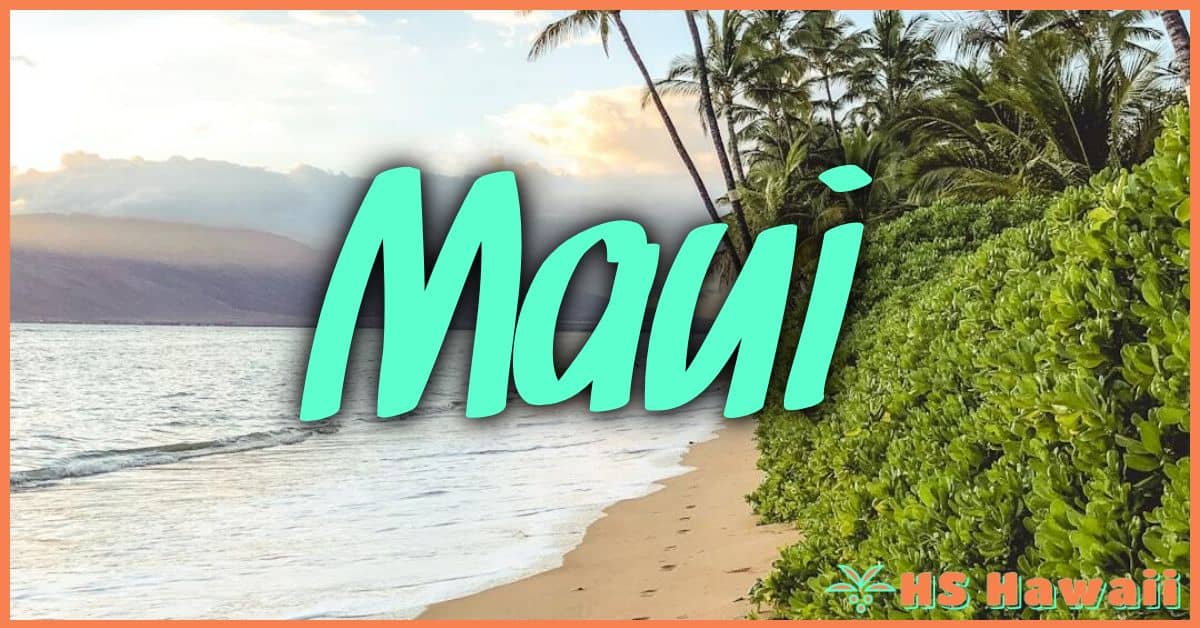
Maui Travel Guide: Your Essential Resource for a Memorable Hawaiian Vacation
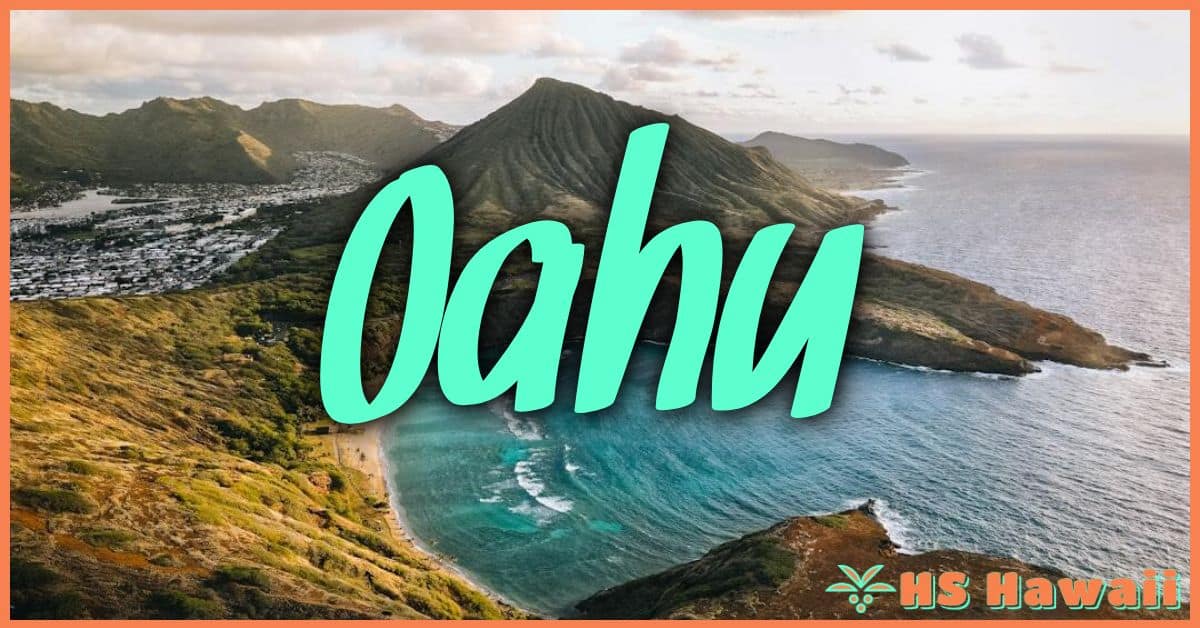
Oahu Travel Guide: Your Essential Resource for Hawaii’s Gathering Place
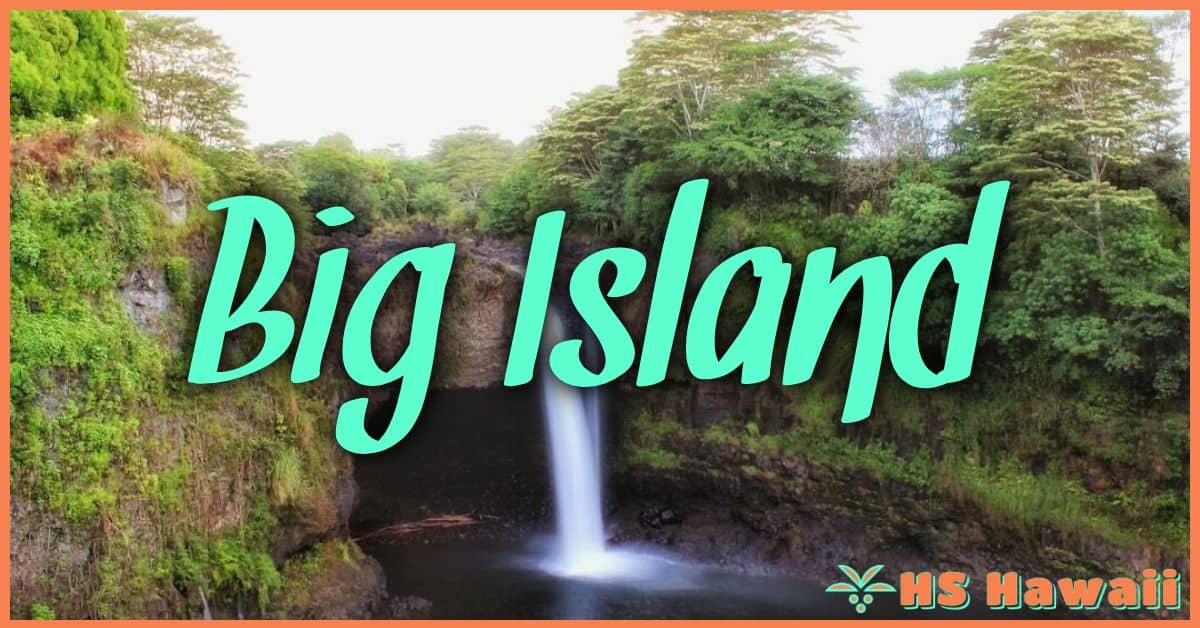
Big Island Travel Guide: Your Ultimate Journey to Paradise

Kauai Travel Guide: Unleash Your Adventure in Hawaii’s Untamed Paradise
- North America
- United States
Maps of Hawaii
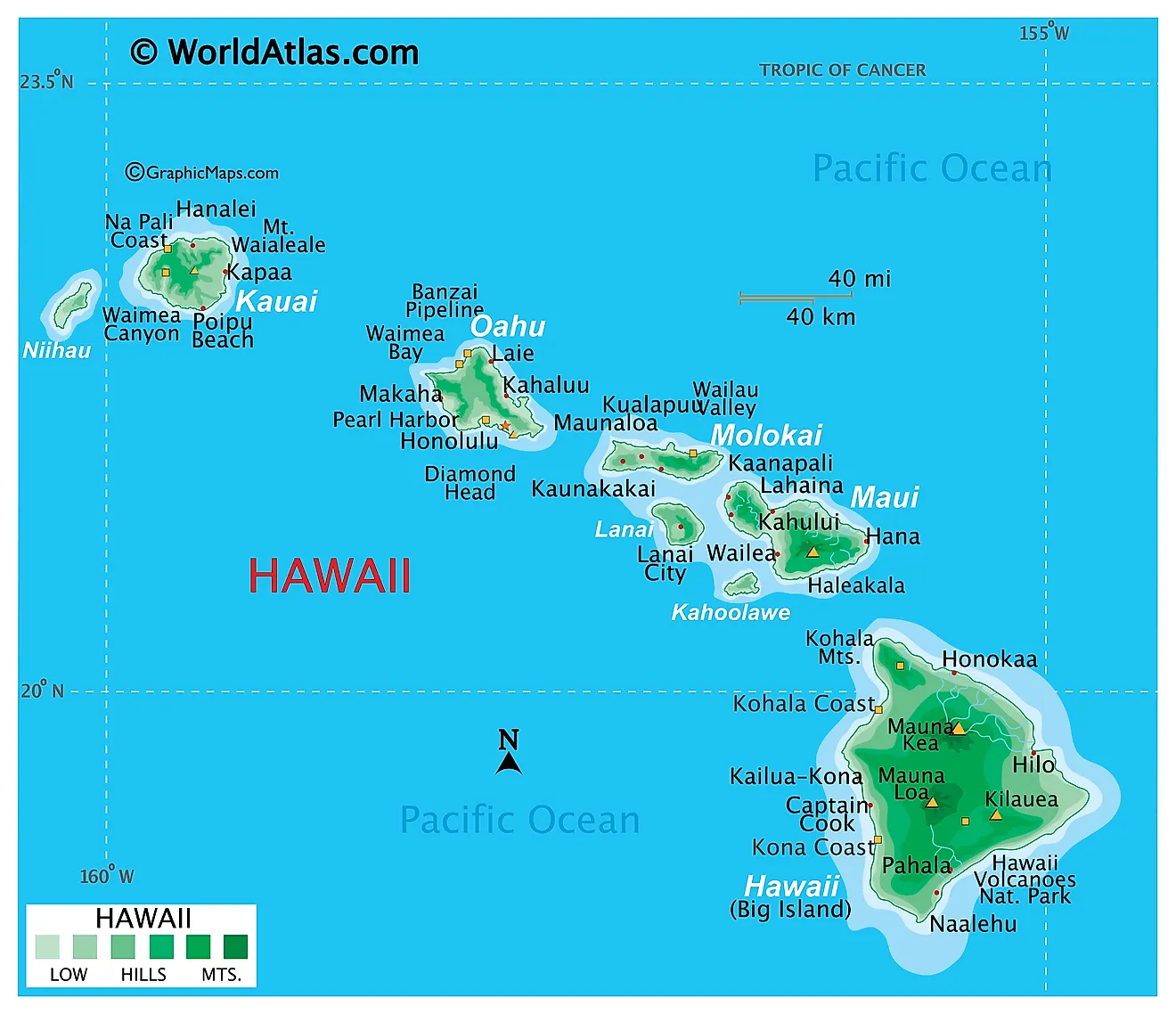
Hawaii is a group of volcanic islands located in the central Pacific Ocean . Occupied by indigenous groups at first, the United States incorporated the region into a state in 1959. It consists of eight main islands and numerous smaller ones, with a total land area of 10,931 square miles. The islands are approximately 2,390 miles west of California and 3,850 miles east of Tokyo.
A diverse range of natural features characterizes the geography of Hawaii. Over millions of years, the islands were formed through volcanic activity, resulting in rugged mountain ranges, deep valleys, and steep cliffs. The highest peak in Hawaii is Mauna Kea on the Big Island , which stands at 13,803 feet above sea level.
Ironically, in this tropical paradise, the summits of the sporadically active volcanoes of Mauna Loa and Mauna Kea, are frequently snow-capped. Kilauea is the youngest volcano in the Volcanoes National Park, which still erupts occasionally, spewing lava and creating new land. Other volcanoes of note include Maui's Haleakala, Oahu’s Diamond Head, and Mt. Waialeale on the island of Kauai. Mt. Waialeale is widely referred to as the (rainiest spot) on the planet, with over 450 inches of rain each year.
Waimea Canyon on Kauai is one of the island's most dramatic landforms, and across the larger island’s fertile mountain valleys, volcanic craters, deep canyons, and waterfalls are also commonplace. There are no sizeable navigated rivers in Hawaii, however, the Anahulu on Oahu, the Wailua on Kauai, and the Wailuku on the Big Island are the most significant small rivers. Hundreds of narrow streams flow down from the volcanic summits, either to the sea or into the fertile valleys below. The state’s lowest point is the Pacific Ocean (0ft).
The islands are also surrounded by vast stretches of ocean that contain some of the richest marine life in the world. The Pacific Ocean currents bring nutrient-rich waters to Hawaii's shores, supporting a variety of plant and animal species. Coral reefs can be found throughout the area and are home to colorful fish and other aquatic creatures.
Rugged sea cliffs fringe the outer edges of many of the islands, with the Na pali Coast of Kauai, southeastern edges of Maui, and the north shore of Molokai the most dramatic. The state’s highest point is the dormant volcanic mountain - Mauna Kea. Located on the Hawaii island, it rises to an elevation of 13,796ft.
The climate in Hawaii is generally warm and tropical, with temperatures ranging between 75°F to 85°F throughout the year. However, the weather can be unpredictable at times due to its location in the middle of the Pacific Ocean. Hawaii experiences occasional hurricanes and tropical storms that can cause significant damage to the islands.
The vegetation in Hawaii ranges from lush tropical rainforests to dry grasslands. Unique plant species such as hibiscus flowers, plumeria trees, and coconut palms thrive in this environment.
Counties Map
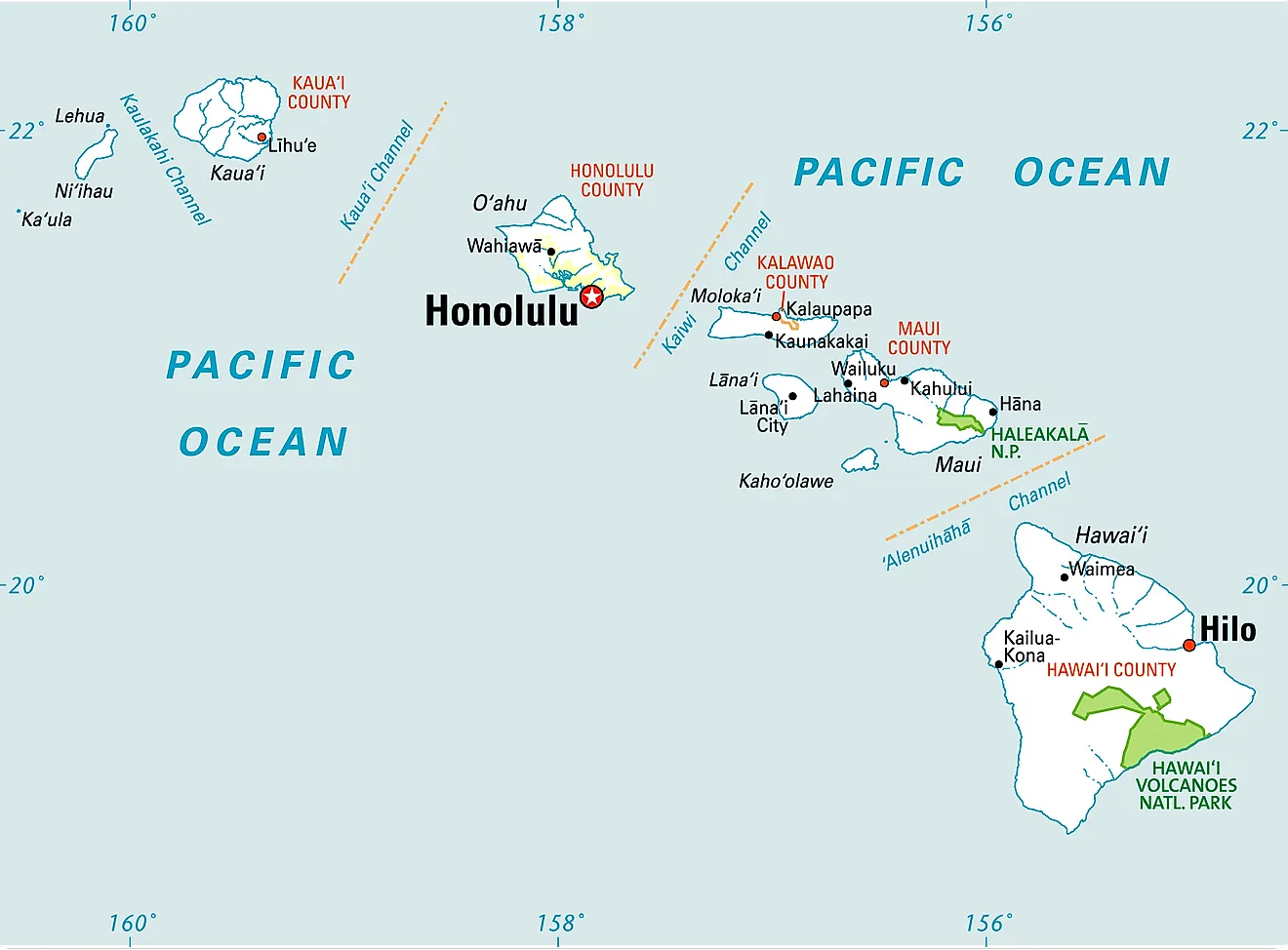
The State of Hawaii is divided into 5 counties. In alphabetical order, these counties are: Hawaii County, Honolulu, Kalawao, Kauai, and Maui.
With an area of 16,638 sq. km, Hawaii is the 8 th smallest and the 11 th least populous state in the USA. Located on the southeastern coast of Oahu Island is Honolulu – the capital and the largest city of Hawaii. It hosts the headquarters of several large Hawaiian companies and is also the state’s principal port, financial and economic hub. Honolulu has been classified as a “Modern City” by international standards with its skyline being dotted with numerous skyscrapers.
Where is Hawaii?
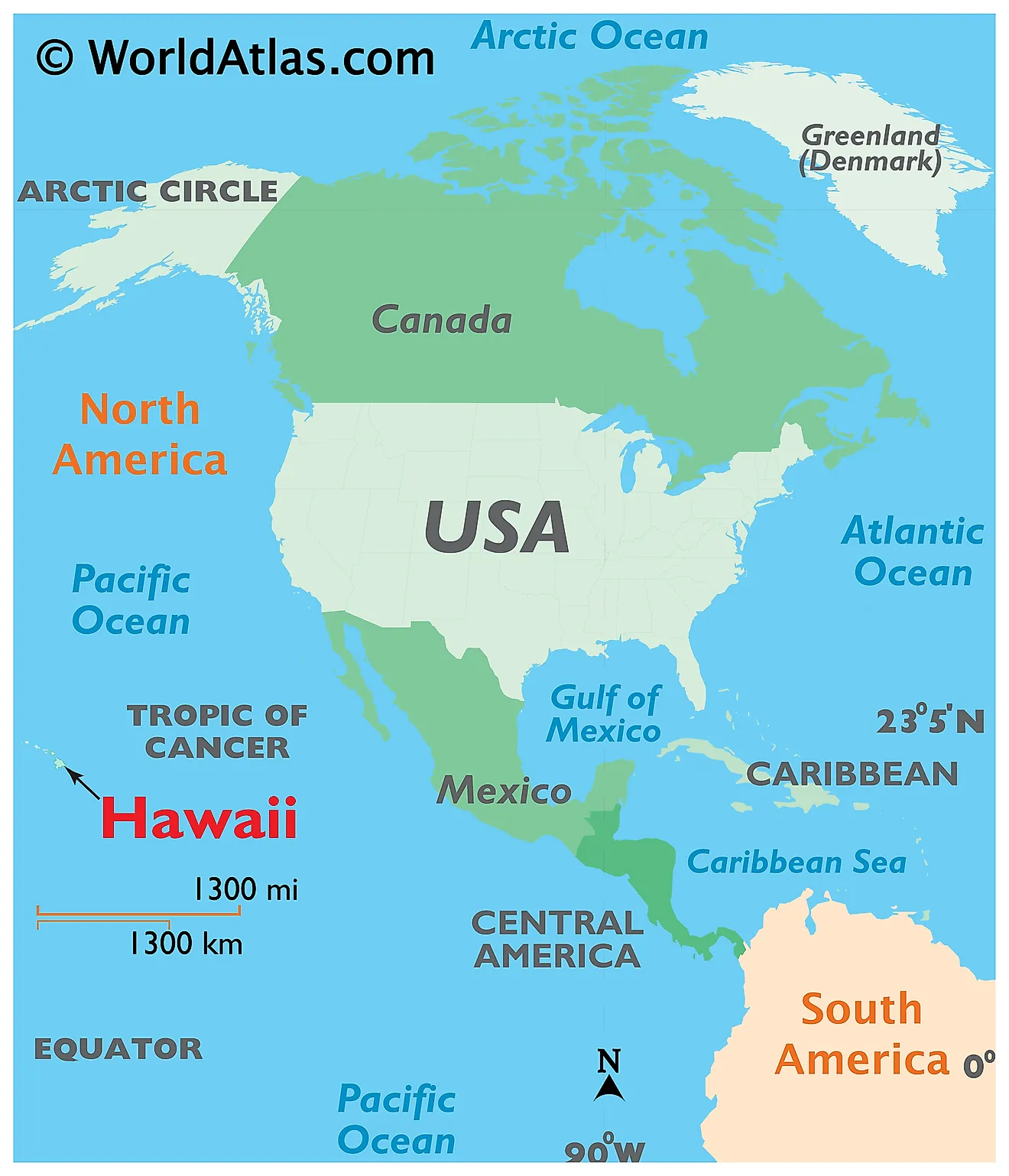
The State of Hawaii (Hawaiian archipelago) is located in the Pacific Ocean to the southwest of the contiguous United States. Hawaii is located in the North Pacific Ocean, just a few degrees south of the Tropic of Cancer, approximately 2,392 miles west of San Francisco; 2,550 miles southwest of Los Angeles; 3,900 miles southeast of Tokyo, and 4,536 miles northeast of Australia.
Regional Maps : Map of North America
Outline Map of Hawaii
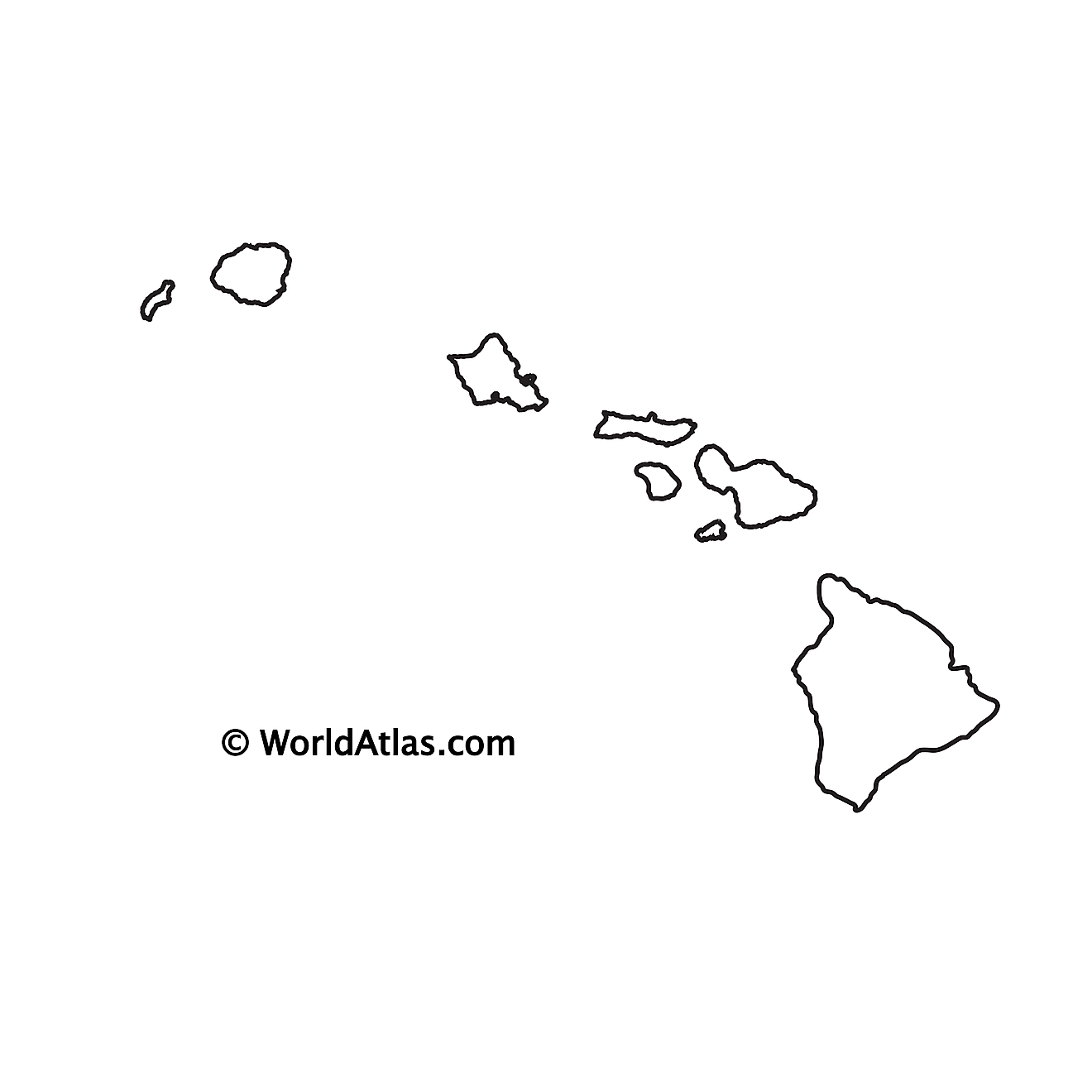
The above blank map represents the State of Hawaii (Hawaiian archipelago), located in the Pacific Ocean to the southwest of the contiguous United States. The above map can be downloaded, printed and used for geography education purposes like map-pointing and coloring activities.
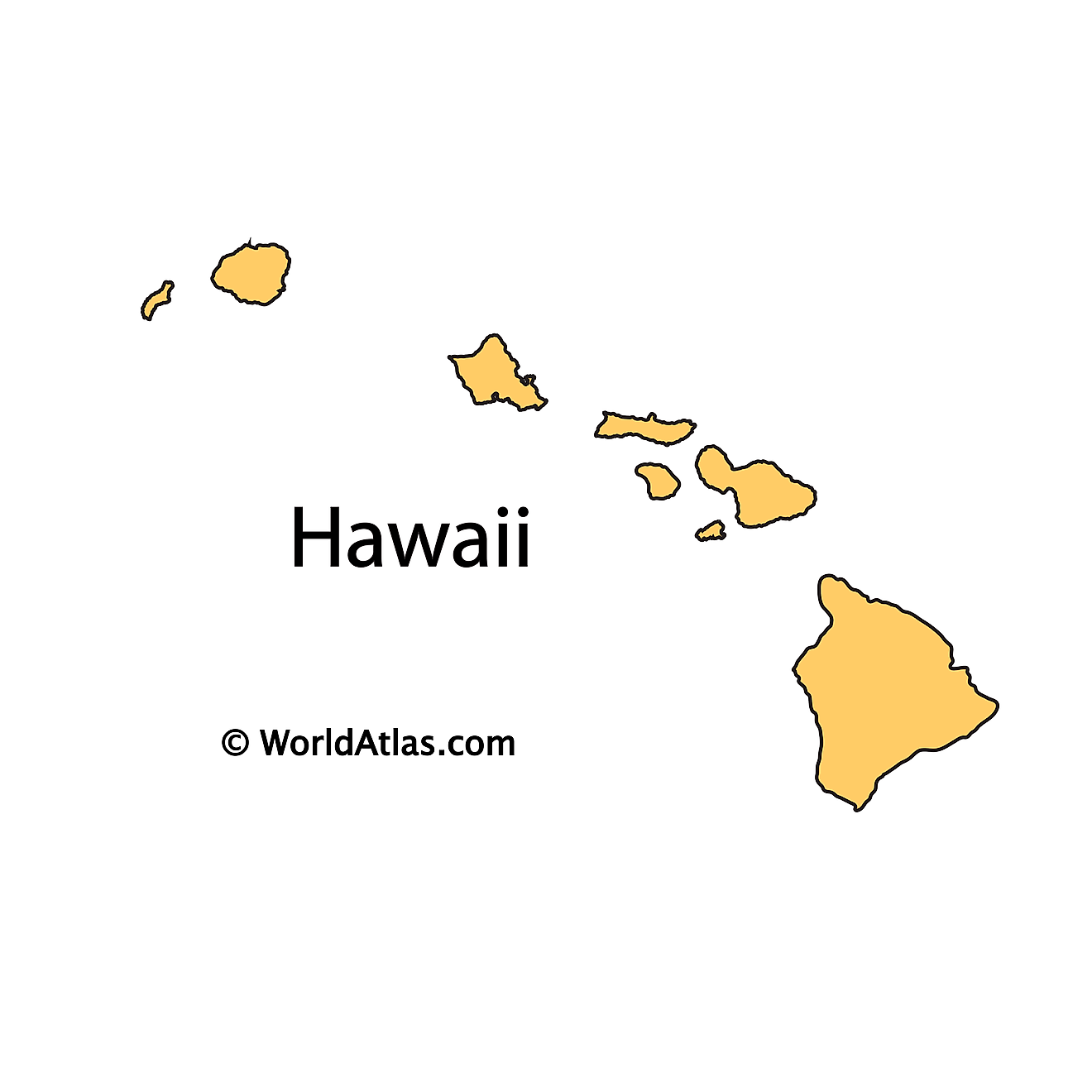
The above outline map represents the State of Hawaii (Hawaiian archipelago), located in the Pacific Ocean to the southwest of the contiguous United States. Nicknamed as the "Aloha State", it is the only U.S. state to be completely made up of islands.
This page was last updated on March 6, 2023
Latest by WorldAtlas
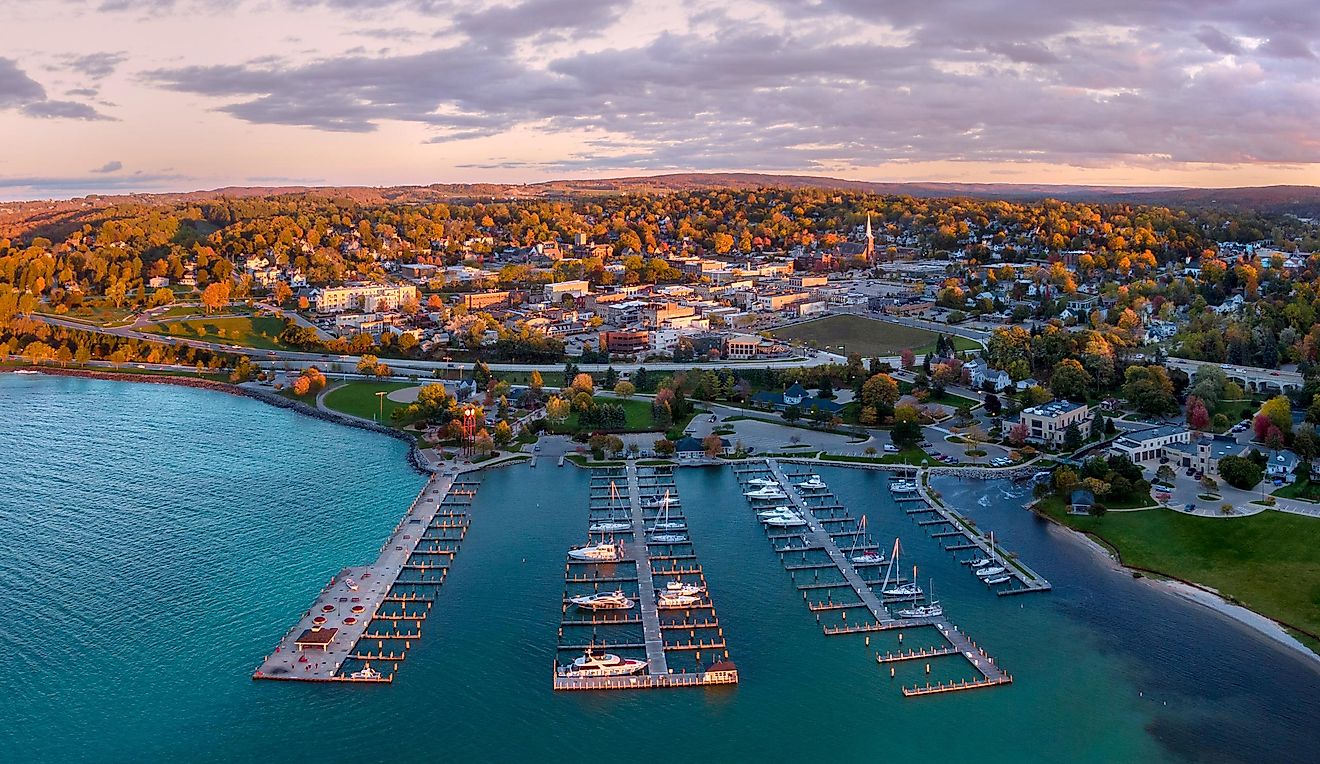

7 Serene Towns In The Great Lakes For A Weekend Retreat
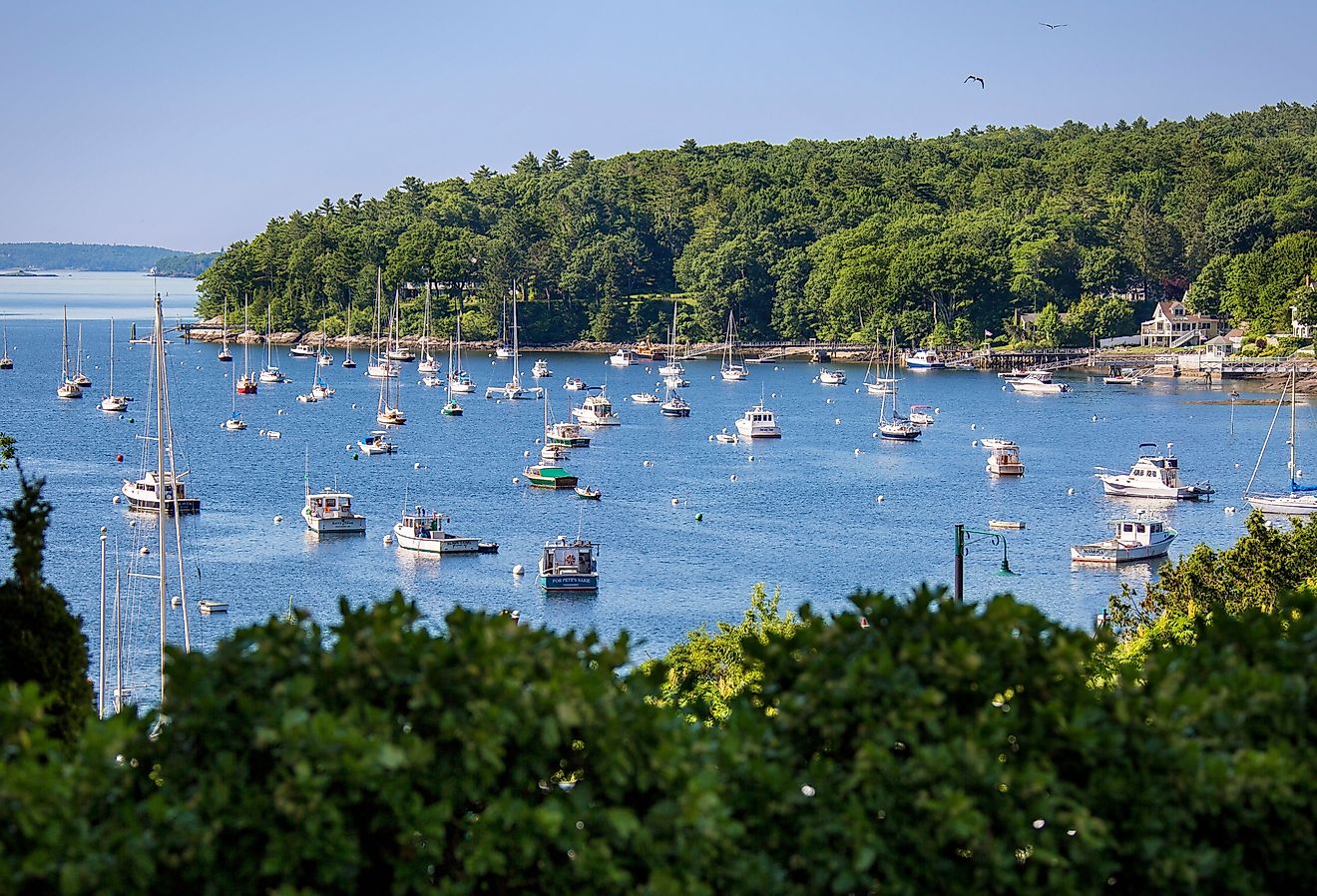
7 Towns Perfect for Retirement in Maine
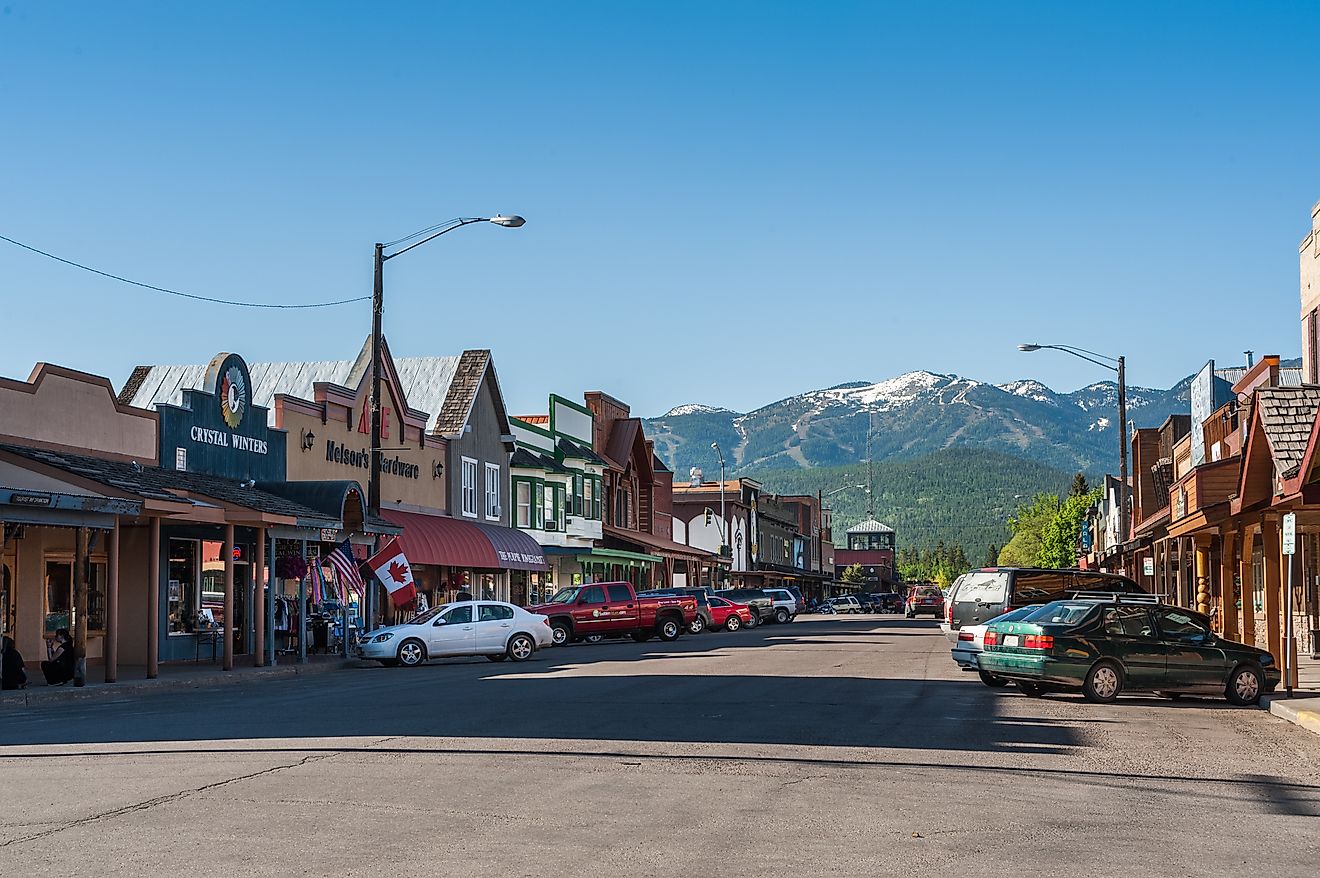
8 Most Scenic Small Towns in Montana
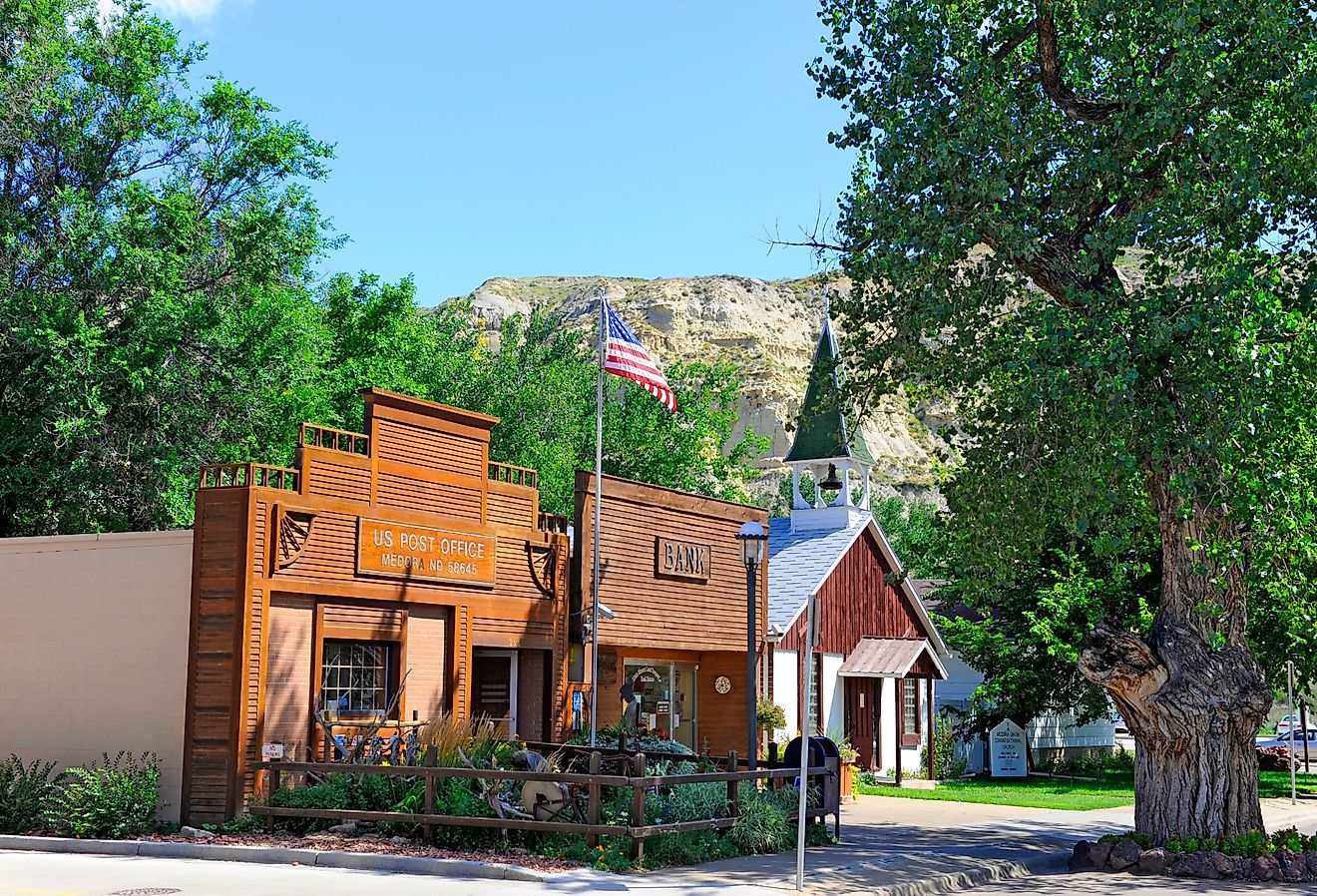
9 Most Charming River Towns in North Dakota to Visit in 2024
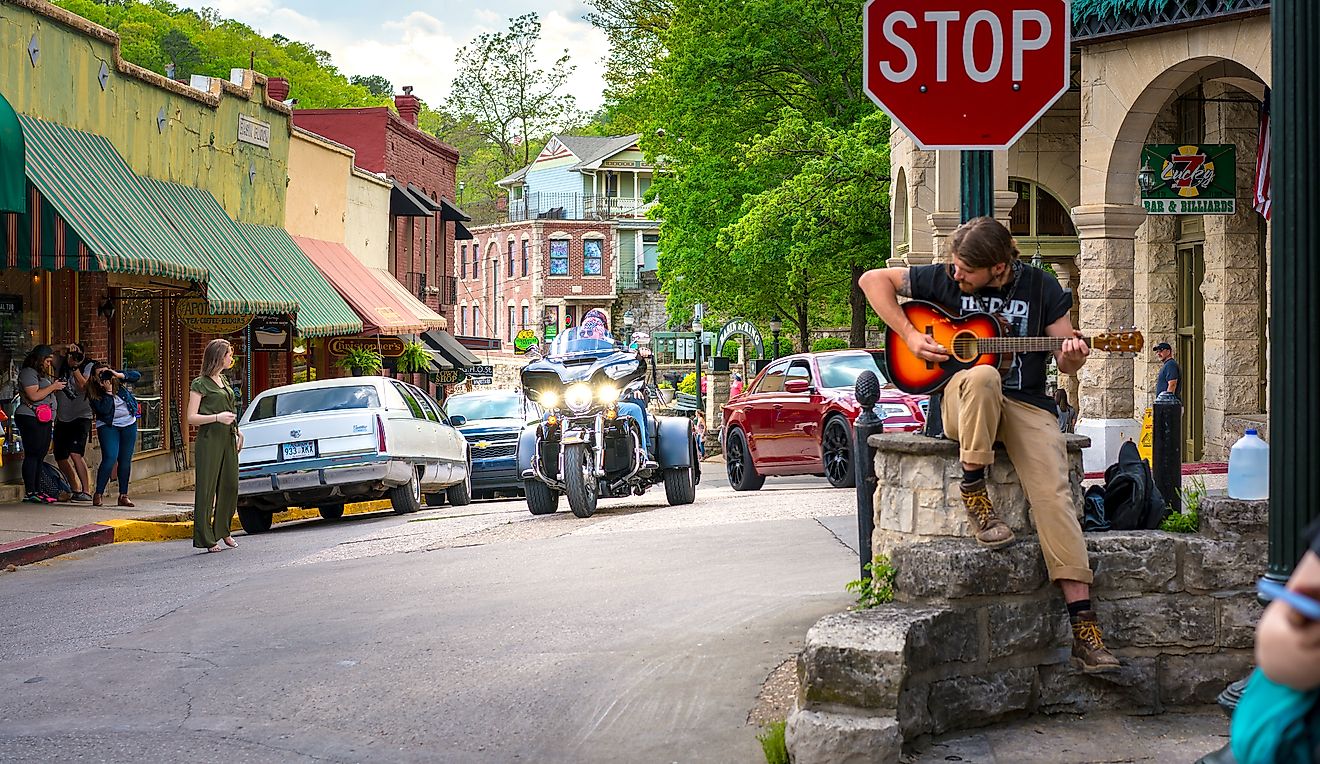
8 Most Inviting Towns In The Mid-South
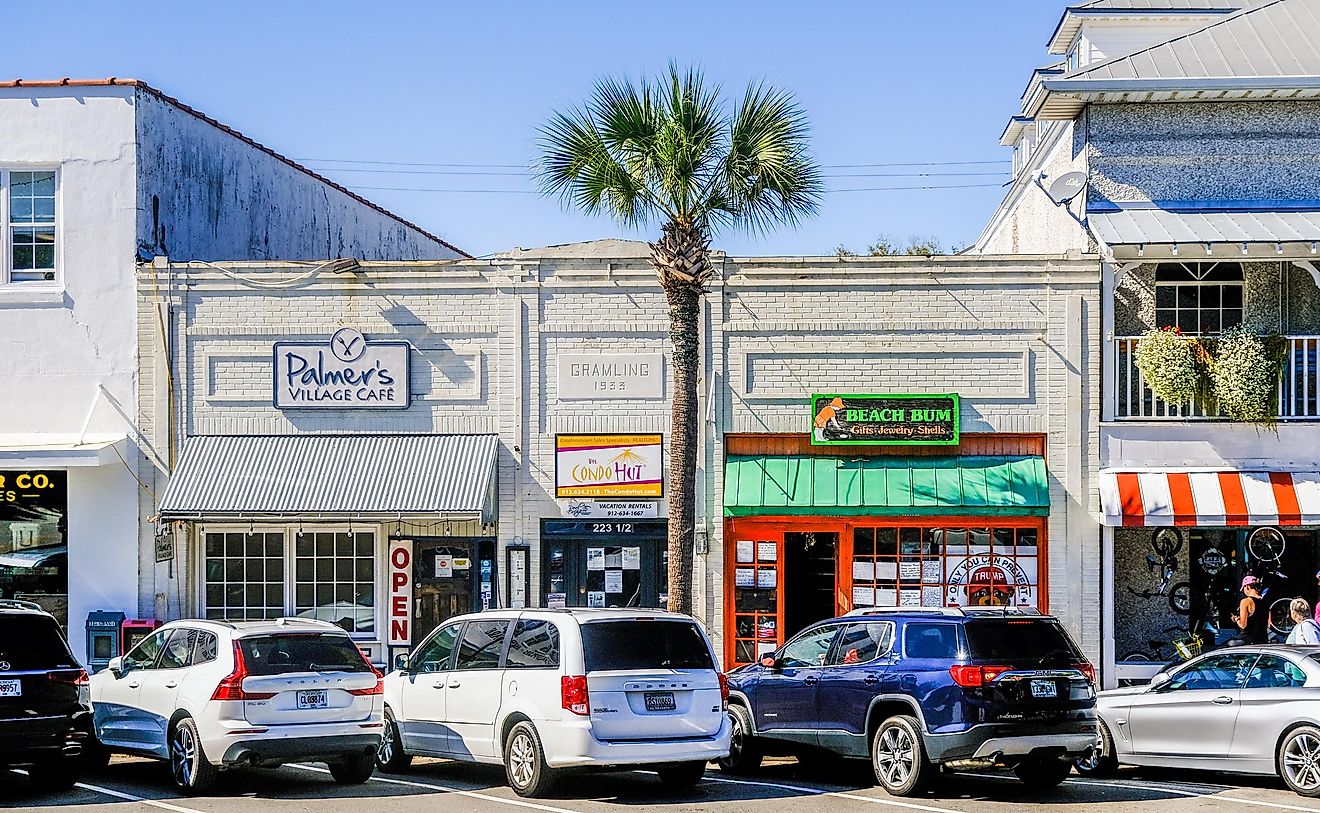
6 Towns Perfect for Retirement in Georgia
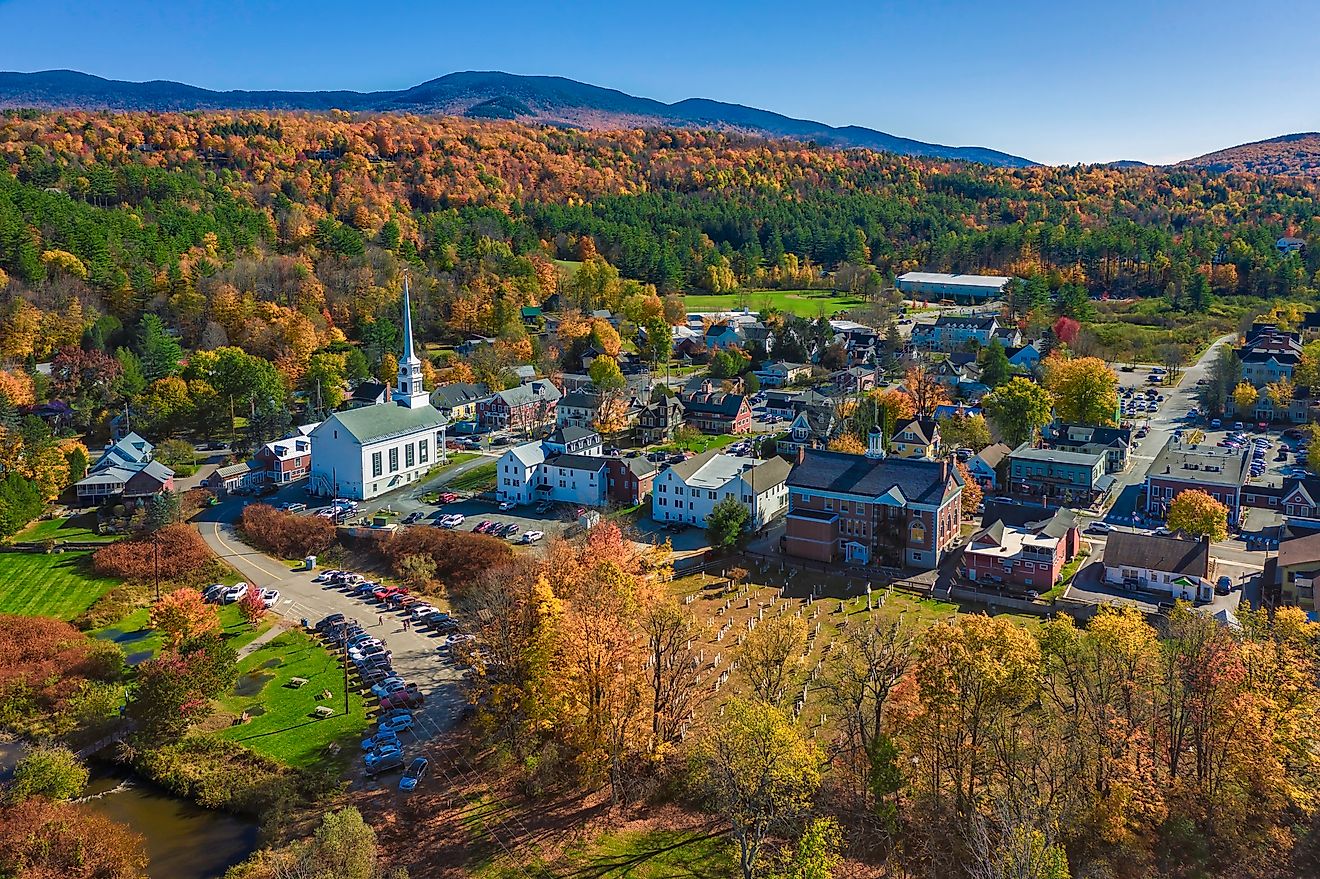
7 Most Inviting Towns In Vermont
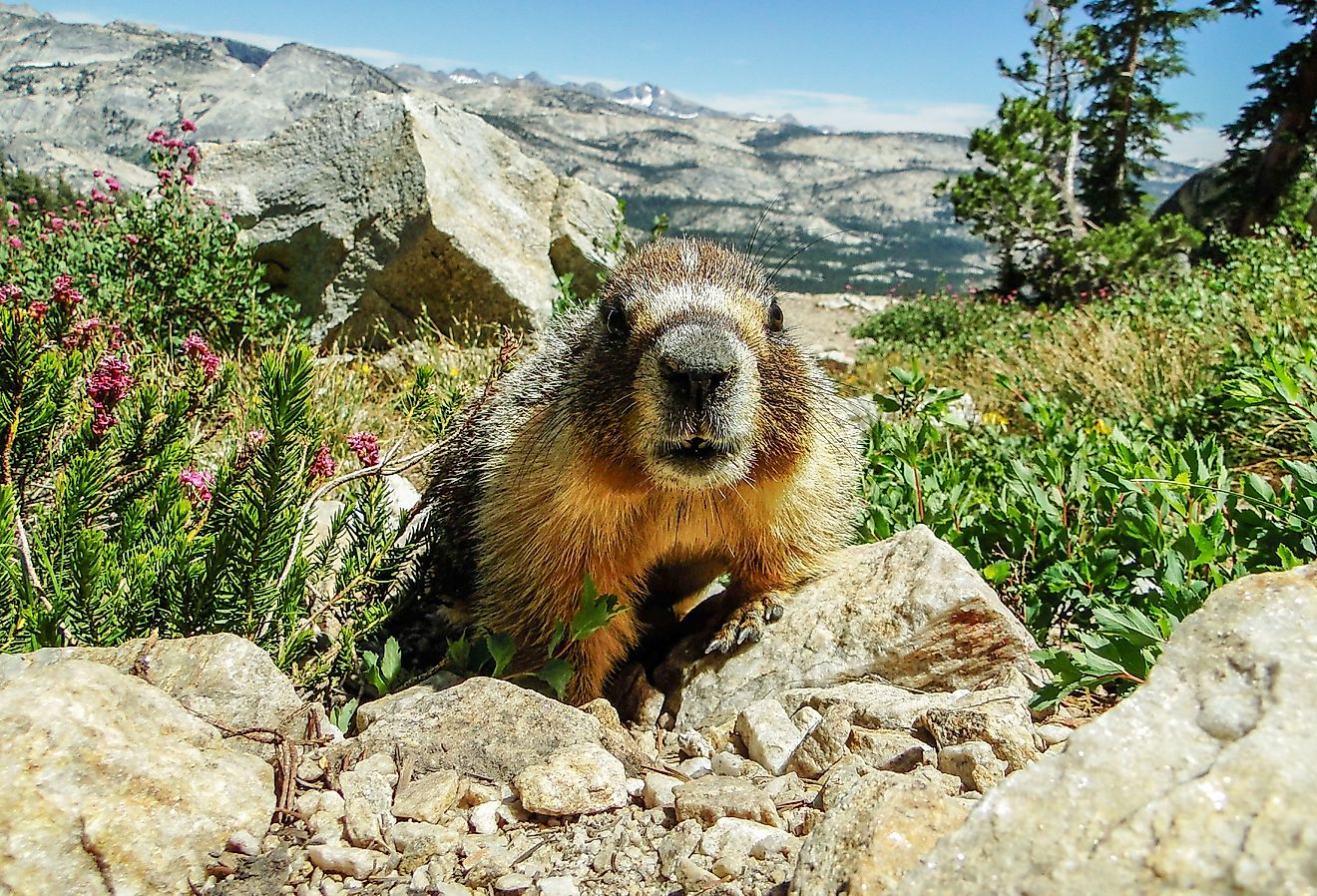
9 Best Destinations For Wildlife Spotting in California
SELF GUIDED AUDIO TOURS HAWAII

Your tours are connected to your Email/Google play account
Use the same account for both our website and app

Already have an account? Log In.
You can also Checkout as guest and miss all the fun!

Don't have an account? Sign up.
Email address
Create an account
Already have an account? Log in
Confirm password
Use 8 or more characters with a mix of letters, numbers & symbols
Type the email you used to create the account.
Check your email and follow link for restore password
Shopping Cart
Add gift message (free).
Receive directions via email for how to redeem your purchase.
Hawaii Maps
December 22, 2021
Shaka Guide
Planning your trip to Hawaii? Check out our island maps to find points of interest including, hikes, beaches and attractions as well as major cities and airports.
Check for maps by island:
The Hawaiian Island Chain
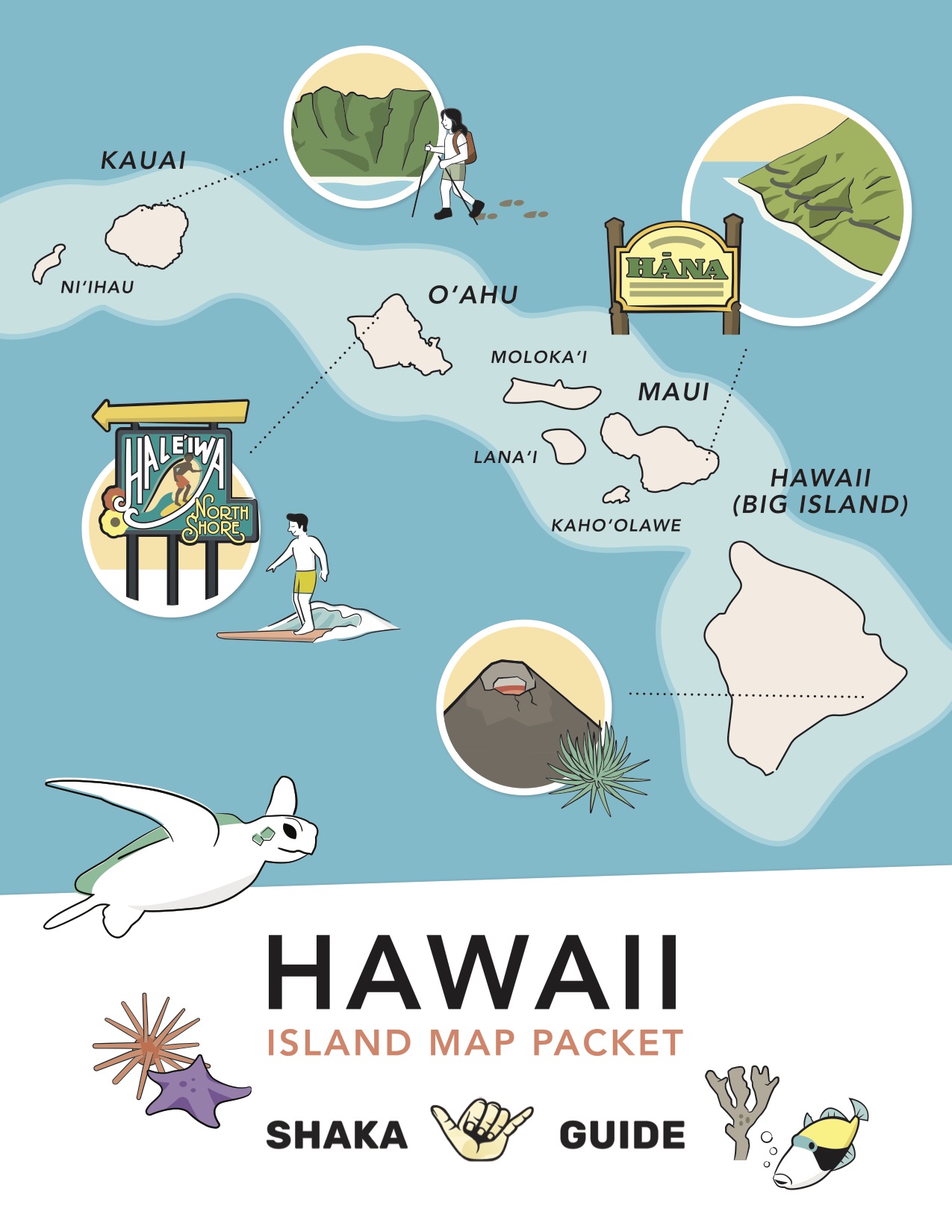
Big Island
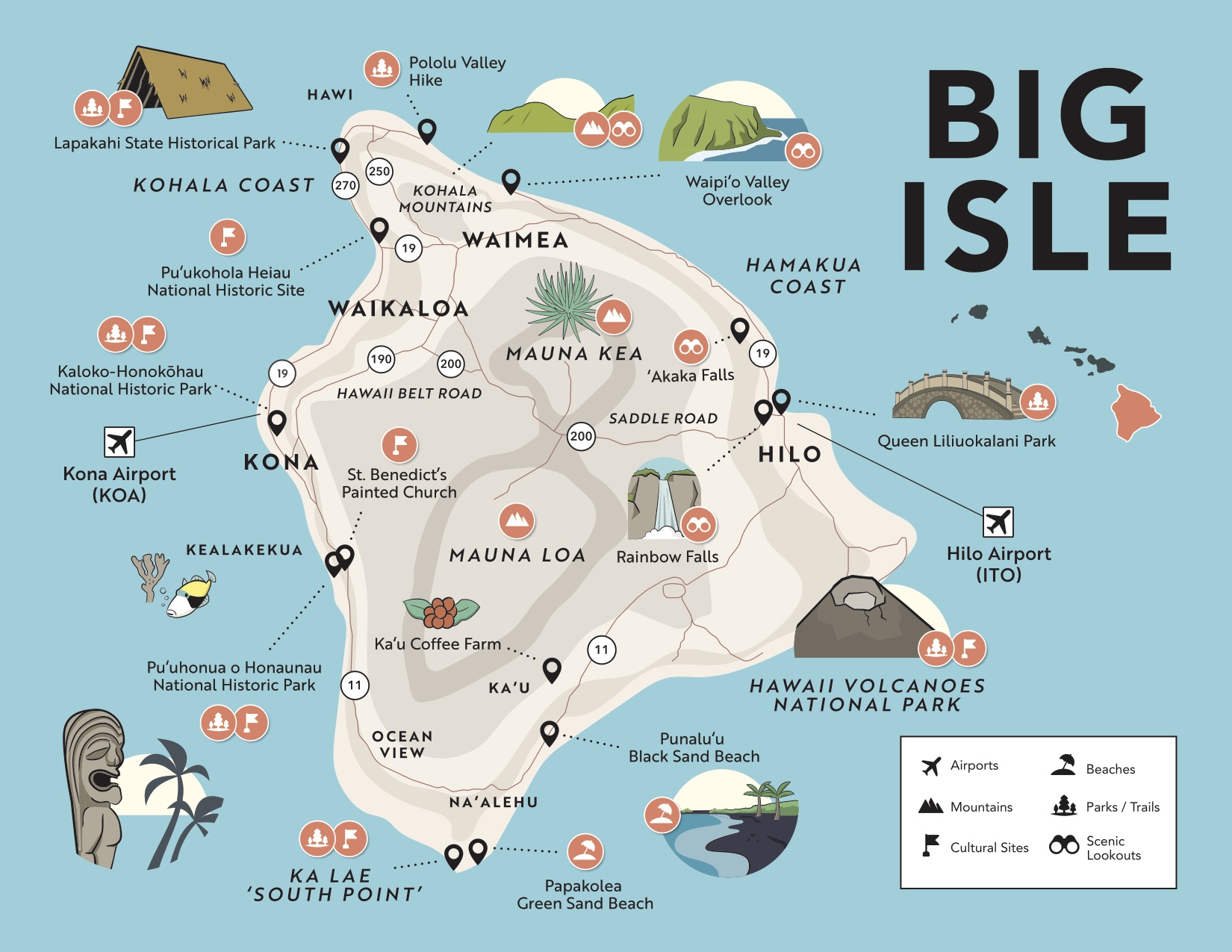
Visiting Hawaii? Check out our GPS audio driving tours for turn-by-turn directions to popular stops with stories and music along the way!
HAWAII GUIDES:
When is the Best Time to Visit Hawaii?
Flying to Hawaii, A Guide
How to See Lava in Hawaii, Updated 2023
Where to Go Whale Watching in Hawaii
Hawaii Airports Guide: Everything You Need to Know
Which Island is Best for You and When Should You Visit
Hawaii's Volcanoes by Island
THINGS TO DO IN HAWAII:
24 Fun-Filled Things to Do in Hilo, Hawaii
50+ Family-Friendly Things to Do in Hawaii
12 Ways to Be a Respectful Traveler in Hawaii
15 Socially-Distanced Things to Do in Hawaii
20 Photos of Hawaii That Will Have You Book Tickets
HEART OF WAIKIKI WALKING TOUR
Related articles.
Hawaii Guide: Which Island is Best for You and When Should You Visit
Photo by Peter Vanosdall, Unsplash
Photo by Ross Parmly on Unsplash
Island of Hawaii Visitors Bureau (IHVB) / Kirk Lee Aeder
Let's Be Friends
Download the shaka guide app, get the shaka guide app.
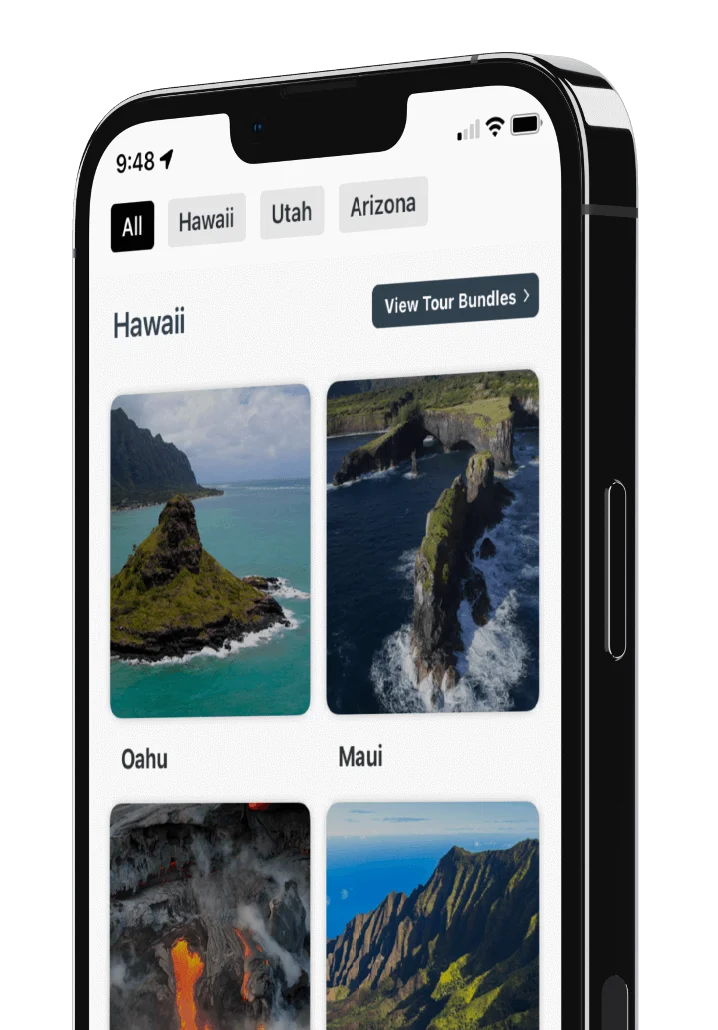
Join Our Newsletter!
We won't spam you! We’ll send you information about new tour releases, trip planning, and awesome stories.
A beginner's guide to the Hawaiian islands
Book your individual trip , stress-free with local travel experts
- roughguides.com
- guide-to-the-hawaiian-islands
Plan your tailor-made trip with a local expert
Book securely with money-back guarantee
Travel stress-free with local assistance and 24/7 support
written by Joanne Owen
updated 31.08.2021
With six major freely visitable Hawaiian islands - Oahu, Maui, Kauai, Hawaii (aka Big Island), Lanai and Molokai - the million dollar question for anyone looking to visit Hawaii is which one? The signature offerings of the USA's 50th state - beautiful beaches, top surf spots, breath-taking natural beauty, and lively luaus (parties) - all live up to the hype. To discover which of these dream destinations will best suit your needs, here’s our Hawaiian islands overview, written with first-timers in mind.
Which Hawaiian island should you visit?
The big island, best beaches on the hawaiian islands, adventure activities on the hawaiian islands, cultural experiences on the hawaiian islands, what to eat on the hawaiian islands, where to stay on the hawaiian islands.
Diverse in size, personality and population, Hawaii offer visitors a huge variety of things to see and do, so you’ll want to choose your island wisely - and this guide to the Hawaiian islands will help you do just that. Whether you want to scale epic volcanic pinnacles, uncover local culture and cuisine, surf some of the world’s wildest waves, or soak up sunrays, there’s an island that will deliver everything you’re looking for (and more).
Rising from the Pacific Ocean like fertile sea sanctuaries, the islands are actually enormous volcanoes. In fact, the volcanic vent that continues to cause Kilauea to erupt on Hawaii Island was responsible for the genesis of all Hawaii’s islands, in effect giving birth to all those fiery sunsets, misty mountains and colossal cascading waterfalls. But the Hawaiian islands have their bustling towns and cities too - Honolulu is home to almost 350 thousand people, for example.

Stunning Honolulu sunset © Shutterstock
Despite their differences - physical and cultural - the Hawaiian islands are united by the unmistakable spirit of aloha. Translated, aloha comprises alo (face) and ha (the breath of life), and it binds the islands’ populations, whatever their background. Though commonly used as a greeting, aloha means much more than “hello”. It’s an expression of sincerity from the heart. Something to strive for in life - an ethos of treating those around you with love and compassion. One thing’s certain, you’re sure to encounter the spirit during your trip whichever island you choose to visit, as this guide to the Hawaiian islands reveals.
Home to Hawaii’s capital and largest city, Oahu is a pretty unique place, to put it mildly. Where else on earth can you explore dense rainforest and volcanic craters, surf monstrous waves, take-in a multimillion-dollar cityscape, and goof around on a Disney resort?
Honolulu itself has plenty to satisfy history and culture buffs, including the Iolani Palace and Honolulu Museum of Art . A great way to see the city and historic Pearl Harbour is to take this fascinating four-hour tour in the company of an expert Hawaiian Islands tourist guide. Alternatively, if you fancy mixing culture with nature, this full-day trip around the entire island is the perfect way to do exactly that. Covering Waimea Valley’s waterfalls, the beautiful Byodo-In temple, Halona Blowhole, and much more besides, it gives a great overview of Oahu.

Pearl Harbor, Honolulu, Hawaii, USA © Ppictures/Shutterstock
Perhaps the first thing that comes to mind when you think of Hawaii is Waikiki. This iconic beach, immortalised in many a movie, is located three miles east of the city. Actually a series of connecting beaches - Sans Souci, Queen’s Surf, Kuhio, Waikiki, DeRussy, and Duke Kahanamoku - the sand extends for more than a mile in a near-perfect crescent. You certainly won’t be short of things to do here. Waikiki is a buzzing tourist-oriented beach, with the likes of snorkelling and sailing trips , sunset cocktail cruises and surf schools to keep you active and entertained.

Wakiki beach and Diamond Head, Honolulu, Oahu © aines / Shutterstock
Though Oahu certainly has its share of natural beauty and quieter spots, if you’re seeking solitude and a “back to nature” experience you might - on balance - want to keep reading this Hawaiian islands travel guide to find your perfect place in paradise.
Glamourous, scenic and with world-class water-sports and whale-watching experiences, Maui ticks a whole lot of boxes. It’s home to some of the Hawaiian islands’ swankiest resorts and best beaches, and big on natural diversity too.
The island’s main tourist area is lively (yet laidback) Lahaina, a waterfront town that was once a magnet for whalers and seamen, with the narrow streets once walked by Mark Twain and Herman Melville now lined with cafés and restaurants. A street segway tour is a fun and family-friendly way to see the town, which is also one of several bases from which to join a humpback whale-watching excursion .

Humongous humpback whale tail in Hawaii © Shutterstock
When it comes to beaches, you’ll be spoiled for choice on Maui. Among its best are Kapalua Beach, Big Beach (officially named Oneloa Beach, or Makena Beach State Park), and La Pérouse Bay, a popular (and pretty) spot for snorkelling and kayaking.

One of the many beaches viewable from the Road to Hana, Maui © Vacclav / Shutterstock
If staggering scenery is more your bag, you’ll want to make a beeline for Haleakala National Park . Here on the slopes of Maui’s volcano, life is a mix of geologic wonders and cowboy culture, with a thirty-mile system of trails to follow on foot or horseback. Watching the sunrise atop Haleakala volcano is an unforgettable experience , as is driving the winding 64-mile Hana Highway. Not for the faint-hearted, this zig-zagging route along Maui’s north-eastern shore affords incredible views of waterfalls, beaches and tropical rainforests. You could combine seeing a staggering number of Maui’s natural hotspots into one trip by taking this epic private tour .
All things considered, Maui is best-suited for active adventurers and devoted beach-worshippers - with plenty of luxury resorts to lay down your head in style, among them Montage Kapalua Bay , an elegantly landscaped 24-acre oceanfront resort with luxurious suites. What’s more, it’s primely positioned for sunsets that will take your breath away.
It’s not for nothing that Kauai is known as the “Garden Isle” of the Hawaiian islands. This fertile stunner is mostly covered in tropical rainforest and, as a result, it typically attracts hikers, nature-lovers and bird-watchers (the island is home to rare species of Hawaiian honeycreepers, such as the black-masked, yellow-and-olive ‘akeke‘e, which is only found in the mountains of Kauai).
Putting its dramatic landscape aside (for the moment, at least), Kauai has a lovely laidback vibe and feels a million miles from the hubbub of Honolulu. But drama is what the island does best, as epitomised by the jaw-dropping pinnacles of the Na Pali Coast, oft-featured in Hollywood adventure films. This coastline is a genuine geological wonder - its natural rock spires were created by two types of erosion after the island was formed hundreds of thousands of years ago.
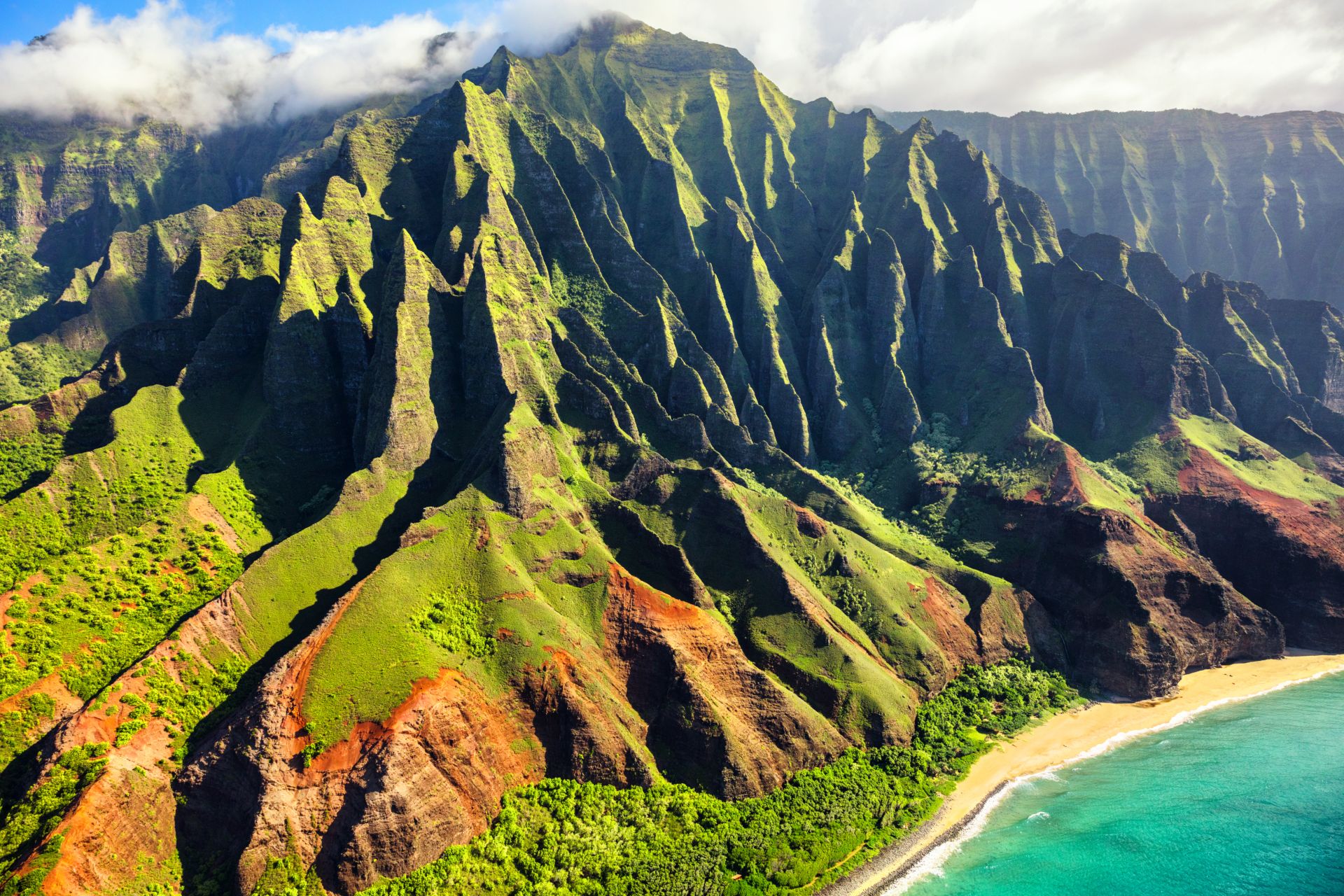
The Na Pali Coast on Kauai © Maridav / Shutterstock
Inaccessible to vehicles, the Na Pali Coast can be enjoyed in a number of ways - helicopter, kayak, paddleboard, or boat. For a full-on Jurassic Park perspective, they don’t come better than this out-of-this-world helicopter trip , which also offers incredible views of Kauai’s other major geological draw - Waimea Canyon . Hands down, this helicopter experience is one of the best ways to explore Hawaiian islands in epic style. Alternatively, this sunset sailing trip affords stunning views of the same coastline from the sea. Or, if you’re fit (and fearless), you could hike the coastline’s Kalalau Trail . While this trek is difficult (guaranteed to get your heart thumping), it’s more than worth the effort, as you’ll discover when you reach the Kalalau Beach endpoint.
Head to the southeast coast for more traditional tourist offerings - Kauai Museum and Grove Farm Homestead and Sugar Plantation Museum , for example, both of which provide Hawaiian islands’ tourist information with a cultural focus). This area is also blessed with some of the island’s best beaches. But, with over half its 550-square miles reserved for conservation and preservation, and tonnes of hiking trails, zip-lines and tropical forest, Kauai is, above all, a paradise for adventurous nature-lovers.
Related articles from the blog

Geologically the youngest of the Hawaiian islands and twice the size of all the others combined, Hawaii Island (aka the Big Island ) is roughly the size of the US state of Connecticut. But, being home to just 185,000 people, with many towns largely unchanged for a century, Big Island has more of a rural small-town atmosphere.
Big Island’s biggest draw is, unquestionably, the Hawaii Volcanoes National Park made up of its southernmost volcanoes - Mauna Loa and Kilauea. Besides its active volcanoes, the park’s landscape includes the windswept deserts of Ka‘u, arctic tundra, and canopied rainforest. The main attraction of the park is Kilauea, which has erupted consistently since 1983. Getting to the part of the park where you can see molton lava takes time - most visitors spend a full day doing this.

Lava flowing into the ocean on The Big Island © Yvonne Baur / Shutterstock
For an alternate way to experience the Big Island’s natural wonders, this Twilight Volcano and Stargazing Tour is out of this world. Offering opportunities to learn about (and sample) local coffee and see green turtles alongside a guided tour of the volcanoes, this varied trip ends with a spot of extraordinary stargazing near Mauna Kea, a massive dormant volcano renowned for its snow-capped peak.
In the south, Kona District is the island’s centre of tourism. Once the playground of Hawaiian royalty, this sun-washed town is crammed with boutiques, bars and hotels. Down by the waterfront, visitors can discover Hawaiian history at Hulihe‘e Palace , built as a holiday home for Hawaiian royalty, and now a museum.
All things considered, the Big Island is ideal for laidback lovers of the great outdoors - people who like their natural wonders explosive, and their towns more understated than, say, Honolulu’s hullaballoo.
Lanai may be little (a mere 18 miles long and 13 miles wide, to be exact), but it packs a whole lot of diversity into its small size. Privately owned but open to visitors, Lanai was once known for its pineapple production - in the early twentieth century it was the world’s largest pineapple exporter, hence its Pineapple Island nickname. Though Lanai's focus has shifted from prickly fruit to luxury resorts, most of the population are descended from plantation workers.

Beach Lava Boulders and Shipwreck view © JMT2064/Shutterstock
Alongside having its fair share of quintessentially Hawaiian palm trees and picture-perfect beaches, Lanai is also home to an eerie red-rock landscape that looks more like something you’d expect to find in the Wild West (or on Mars) than Hawaii. Known as the Garden of the Gods , this unearthly scene of boulders and lava formations look especially spectacular at sunset - the rocks exude blazing orange in the last light of day.
Another Lanai must-see is Sweetheart Rock, a triangular-shaped rock just offshore in Hulopo‘e Bay. At the heart of a tragic Romeo and Juliet-esque Hawaiian legend, the rock is only accessible by kayak or stand-up paddleboard on days when the water is flat and calm. The bay itself is a nature conservation site, home to spinner dolphins, turtles and a whole lot more besides, and off-limits to nearly all boats. It also happens to be one the best places on the island to swim and snorkel.
Lanai’s unusual sights don’t stop there - Shipwreck Beach is home to the offshore wreck of a WWII tanker, then there’s the Munro Trail, a 4x4 dirt track that climbs along the island’s eastern ridge. On a clear day, all the major Hawaiian islands except Kauai and Ni‘ihau can be seen on the horizon.
If you love small-island sweetness, otherworldly landscapes and eclectic sights (with ample opportunity to indulge yourself at a luxury resort), Lanai’s the one for you.
The least populated of the Hawaiian islands, Molokai is a haven for travellers who want to immerse themselves in authentic Hawaii, not least because it has the state’s highest percentage of Native Hawaiians. Here tourist resorts are few; big bus tours are non-existent. Molokai is quiet, and moves at its own (slow) pace - and therein lies its appeal. Having said that, the island has plenty to attract adventure-seekers.
With three geological anchors - Mauna Loa, Mauna Kamakou and Kauhako - Molokai’s landscape is dramatic, and the island boasts both the world’s highest sea cliffs and Hawaii’s longest continuous fringing reef.

Molokai's sea cliffs - the highest in the world © kridsada kamsombat / Shutterstock
The Rough Guides to USA and related travel guides
In-depth, easy-to-use travel guides filled with expert advice.

The island is also home to one of Hawaii’s greatest hikes - the Pepe‘opae Trail. After an hour-long stretch of springy boardwalk, you’ll encounter high-altitude mountain boglands and stunted forest before reaching verdant views into two deep valleys along the shore - Wailau and Pelekunu. Molokai’s Halawa Valley also offers great hiking opportunities.
The Kalaupapa National Historical Park is a Molokai must-visit, too. Once an isolated colony for Native Hawaiians suffering from Hansen's disease (also known as leprosy), the most thrilling way to take the trail is on the back of a mule. Pala'Au State Park - home to Ka Ule o Nanaho (“Penis of Nanahoa”), a 6-foot-high phallic rock that was formally visited to cure infertility - offers spectacular views of the former colony from atop the massive cliffs.
If you’re looking for an authentic, back-to-basics Hawaiian islands holiday experience - in stunning surroundings, far from the madding crowd, with plenty of opportunities for adventure - Molokai has your name all over it.
In all honesty, it’s pretty much impossible to pick the Hawaiian islands’ best beaches. But, if forced to highlight a few, some excellent options include Maui’s Makena Beach and Big Beach (the latter of which also made it onto our best beaches in the USA list ), Poipu Beach (Kauai), Punaluu Black Sand Beach (Hawaii Island), and Barack Obama’s personal favourite, Lanikai Beach (Oahu). Oh, and a special (second) mention must go to Kauai’s Kalalau Beach.

Magnificent Makena Beach © 123rf
It’s worth knowing that beaches on the Hawaiian islands are open to the public, which makes for a pleasing mix of locals and tourists enjoying the sun, surf and aloha spirit together.
Outdoor activities on both land and sea are available at all skill levels on the Hawaiian islands.
All the islands offer amazing opportunities to hop on a boat for a snorkelling session or scenic sunset cruise. Dolphin, turtle and whale-watching are a feature of many of them, too. Intrepid surfers will want to practice their craft along Oahu’s North Shore, globally famous for its big wave competitions.

Big-wave surfing, Hawaii © Shutterstock
For a break from the water, you can enjoy horseback riding, off-road vehicle tours, or one of the state’s many famous hiking opportunities. Waikiki’s Diamond Head volcano is one of the most popular, and of course there’s the Volcanoes National Park - there’s no better way to appreciate Hawaii’s position on the Ring of Fire than touring its volcanic remains and marvelling at the glow of active volcanoes bubbling beneath the surface.

Not all about the ocean - Hawaii's volcanic scenery is stunning, too © Hawaiian Tourism Authority / Tor Johnson
Alongside experiencing its seemingly infinite natural beauty, Hawaii’s cultural activities are an essential part of any visit. Oahu’s Polynesian Cultural Center is a great place to learn about the various Polynesian cultures that contribute to Hawaii. In addition, lots of resorts and hotels offer daily cultural activities – from learning how to make leis from fragrant plumeria and how to play the ukulele, to discovering how to dance the hula.
Organized luaus give guests the opportunity to enjoy Hawaiian dance performances while feasting on kaluapig and other traditionally-prepared delicacies. The potato-like taro root is a Hawaiian staple, and many cultural organizations throughout the Hawaiian islands offer you the opportunity to help maintain sacred taro patches by getting down and dirty to pull weeds while learning about traditional culture.
Hawaii has a tantalising mix of culinary influences and popular dishes typically combine native, Chinese, Portuguese, and American elements, with the state’s bountiful tropical fruit and seafood a feature of most menus.

Hawaiian seafood at its freshest - ahi poke (raw tuna salad) © Shutterstock
Must-eat foods include loco moco (white rice topped with a hamburger patty, fried egg, and brown gravy), malasadas (Portuguese donuts), Spam musubi (a slice of grilled Spam atop a block of rice, wrapped in dried seaweed), poke (chopped raw fish), slow-cooked kalua pig, and poi (pounded taro root). Gastronomes would do well to book a tour that combines the best of the island’s sights with culinary experiences, such as this full-day foodie and sightseeing tour on Oahu.

Hawaii has a host of seafood specialities you'll want to sample © Hawaiian Tourism Authority / Dana Edmunds
Choosing what kind of place to say will, of course, depend on your budget and which island you’re on. If you’re looking for get-away-from-it-all luxury, most Hawaiian islands aren’t short of high-end resorts (though you won’t find fancy concierge service resorts on less developed Molokai). In Waikiki, for example, The Royal Hawaiian is a palatial option for those with a bigger budget.
But to really dive in and experience Hawaii like a local, you might want to consider a cosy guesthouse or, for a true back-to-nature experience, there are plenty of opportunities to camp and sleep under the Hawaiian islands’ awe-inspiring stars.
At Rough Guides we’ve always taken pride in telling it like it is - whether we’re updating details in our guide books, or researching emerging destinations. With that in mind, we want you to know that when you click on links that lead to our affiliate partners’ sites, we can earn a small commission (at no cost to you). This is one of the ways we’re able to keep doing what we do best - provide you with travel advice and inspiration you can trust. Speaking of which, you can trust what we link to - our travel writer experts are exactly that (experts) and have highlighted them to share ideas that might make your trips all the more satisfying.
Header image Na Pali Coast, Kauai, Hawaiian Islands © Maridav / Shutterstock

Joanne is a Pembrokeshire-born writer with a passion for the nature, cultures and histories of the Caribbean region, especially Dominica. Also passionate about inspiring a love of adventure in young people, she’s the author of several books for children and young adults, hosts international writing workshops, and has written articles on the Caribbean and inspirational community initiatives for Rough Guides. Follow her @JoanneOwen on Twitter and @joanneowenwrites on Instagram.
- Food & Drink
- Inspiration
- See & Do
- Travel Tips
- Where to stay
Planning your own trip? Prepare for your trip
Use Rough Guides' trusted partners for great rates
Travel advice for USA
From travel safety to visa requirements, discover the best tips for traveling to USA
- Eating and drinking in USA
- How to get to USA
- Getting around USA: Transportation Tips
- Travel Tips USA for planning and on the go
- Best time to visit USA
Find even more inspiration for 76 here
Ready to travel and discover usa, get support from our local experts for stress-free planning & worry-free travels.
- Itineraries
- Travel advice

- SOUTH DAKOTA
Big Island map (google maps) with iconic attractions 🌴 Kona and Hilo 🌴 Big Island Hawaii travel blog
Below is basically a Big Island travel planning map.
Use it to plan your Hawaii vacation!
Be sure to play around with the map!
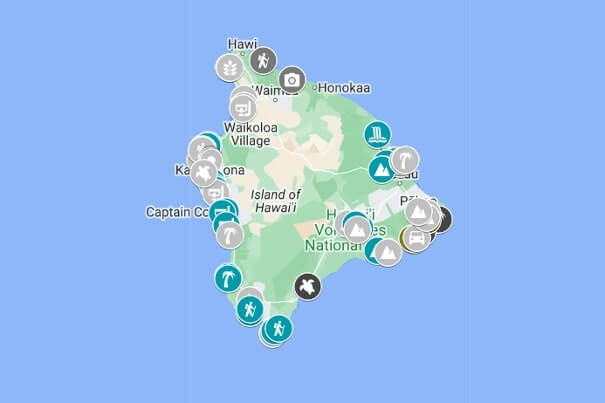
The Big Island travel planning map for Hawaii

Click the little icon in the top left corner of the map to see the list of what you’ll find on this map.
This map may not work very well on this page on mobile, sorry!
In that case, send a link of this page to yourself and try on desktop!
Tips for using this google map of the Big Island on mobile!
If you are on your phone, you can also take a look at this Big Island map in Google Maps. (It is the same map as above but it might be easier for use on your phone.)
For this map, in short, in addition to clicking the icons that you see on the map, also click on the names that come up when you click on an icon!
Most icons have pictures and/or info to go along with it so if you are not seeing it, then click around!
Longer version…
If you do look at the map directly on google, start off by clicking the text at the bottom of the screen (the text that says “big island map”) to see the different categories.
Then you can start clicking around on this list.
Or, you can also just start clicking around on the map.
When you click on an icon on the map, you will see the name of the spot come up at the bottom of the screen.
Click on that name.
Then, you will see a picture of that spot (in most cases!) and also possibly more info!
Phones may have different displays but basically click around on both icons and text!
What’s on the Big Island tourist map?
- Things to do on the Big Island
- Things to do in Kona
- Things to do on the south coast
- Things to do in Volcanoes National Park area
- Things to do in Puna
- Things to do in Hilo area
- Black sand beaches
- Beach hikes
- Hawaii state parks
Here’s the quick list of things to do with 7 days on the Big Island to use along with the map!
- Day 1: Kona coast white sand beaches
- Day 2: Kona coast
- Day 3: South coast
- Day 4: Hawaii volcanoes national park area
- Day 5: Puna coast
- Day 6: Hilo area
- Day 7: North side
See more ideas for a 7-day Big Island itinerary and to plan your circle island drive around the Big Island!

- Makalawena Beach ( hike to it or off-road drive to it )
- Mahaiula Beach
- Puu Kuili hike
- Kaloko-Honokohau National Historical Park to see turtles
- Hulihee Palace
- Broke da mouth grindz restaurant menu
- Da poke shack menu
- Magic Sands Beach
- Kahaluu Beach snorkeling spot
- Captain Cook Monument trail
- Parking for Captain Cook trailhead
- Kealakekua Bay snorkeling spot
- Puuhonua O Honaunau National Historical Park
- Two Step beach snorkeling
- Parking for Two Step beach
- Hookena Beach
- Honomalino Bay ( beach hike )
See more: Things to do in Kona | Where to stay in Kona | Kona hotels map
South coast

- Kula Kai Caves
- Pohue Bay Beach hike
- South Point
- Papakolea green sand beach
- Punaluu black sand beach
See more: Where to stay on the south coast
Hawaii Volcanoes National Park area

- Mauna Loa Road
- Crater Rim Drive
- Kilauea Iki Trail to hike into a former lava lake
- Chain of Craters Road
- Old Chain of Craters Road to see lava-covered road
- Holei Sea Arch
See more: Driving from Kona to the national park

- Kaimu black sand beach trail
- Kehena clothing optional black sand beach
- Pohoiki black sand beach
- Leilani Avenue
- Lava tree state monument
See more: Things to do in Puna | Where to stay in Puna

- Rainbow Falls
- Kaumana Caves
- Carlsmith Beach Park
- Richardson Ocean Park
- Akaka Falls
See more: Things to do near Hilo

- Waipio Valley beach hike
- Pololu Valley beach hike
- Lapakahi village trail
- Lapakahi snorkeling spot
- Puukohola Heiau National Historic Site
- Hapuna Beach
- Waialea Beach snorkeling spot
And those are activity ideas for your Big Island trip itinerary!
Be sure to see the 7 day Big Island itinerary for ideas on how to spend your days on the Big Island!
Also see more Hawaii ideas with the Oahu map too!
HAPPY BIG ISLAND TRAVEL PLANNING!

Spotted yesterday at #MaunaLoa – a lava boat rides the waves! On Dec 7, a lava boat was spotted floating down channel. Lava boats can form when portions of the cone or lava channel break away & are rafted downstream. Hot lava cools to its surface to create that smooth exterior. pic.twitter.com/D9gdoFolfq — USGS Volcanoes🌋 (@USGSVolcanoes) December 9, 2022

- Things to do on the Big Island (for VIEWS!)
- Things to do in Hawaii Volcanoes National Park
Hawaii Top Things to Know Explore Now →
Kauai Guide
Big island guide, essential travel tips.
- Which Island to Visit? →
- Best Time to Visit →
- Hawaii Must See & Do →
- Hawaii Itineraries →
Travel Information
- Hawaii Weather →
- What to Pack? →
- Best Hawaii Island to Visit →
- Hawaii Safety Tips →
Hawaii Resources
- Hawaii Airports & Terminals →
- Hawaii Maps →
- Hawaii Travel News & Blog →
- Hawaii Visitor FAQ →
View our Hawaii Visitor Guides →
Hawaii Accommodations →
Lodging by island.
- Oahu Lodging
- Maui Lodging
- Big Island Lodging
- Kauai Lodging
Where to Stay
- Where to stay on Oahu →
- Where to stay on Maui →
- Where to stay on Big Island →
- Where to stay on Kauai →
When to Visit
- Best Time to Visit Oahu →
- Best Time to Visit Maui →
- Best Time to Visit the Big Island →
- Best Time to Visit Kauai →
Explore Hawaii Hotel Deals & Specials Search Now
- Hawaii Things to See & Do →
Tours by Island
- Big Island Tours
- Kauai Tours
Hawaii Attractions
- Oahu Attractions →
- Maui Attractions →
- Big Island Attractions →
- Kauai Attractions →
Hawaii Must See & Do
- Oahu Must See & Do →
- Maui Must See & Do →
- Big Island Must See & Do →
- Kauai Must See & Do →
Explore all Hawaii Tours Search Now
Hawaii Map Packet
Downloadable hawaiian maps for each island.
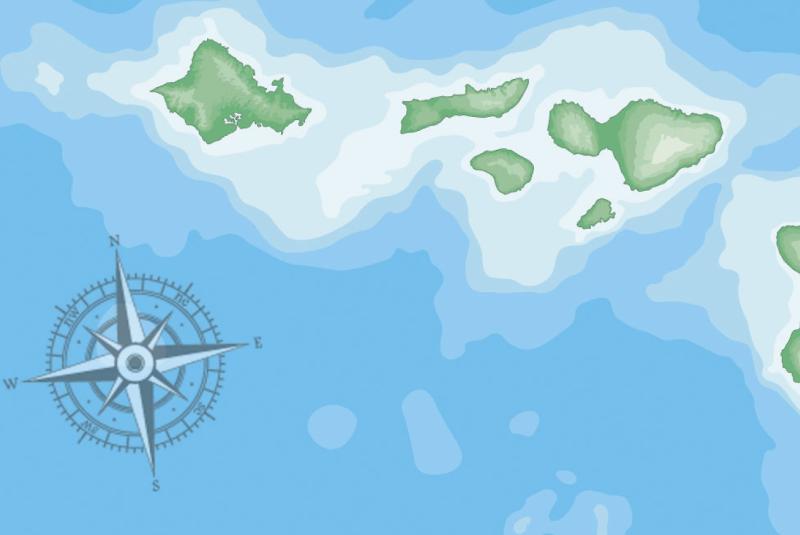
Hawaii Downloadable Maps Packet
Maps for each hawaiian island.
— article continued below —

Updated Hawaii Travel Map Packet
Updated with new high-resolution maps of each main Hawaiian Island. Includes most major attractions per island, all major routes, airports, and a chart with estimated driving times for each island.
- Our dedicated Maui Map packet additionally includes both a Maui Beaches Map + our detailed Road to Hana Map.
- Our dedicated Kauai Map packet additionally includes a Kauai Beaches Map.
- Our dedicated Big Island Map packet now additionally includes a Big Island Beaches Map.
- Our dedicated Oahu Map packet now additionally includes an Oahu Beaches Map.
-File is prepared as a print-ready PDF document
Terms of Use & Disclosures
This website's use is your expressly conditioned acceptance of the terms, conditions, and disclaimers found within our Disclaimer of Warranty and Limitation of Liability page without any modifications. Your use of this website constitutes your acceptance of all the terms , conditions, and disclaimers posted herein. If you do not agree with any part of these terms and conditions, you should not use this website. We also receive a small commission from travel partners for some of the links found on this website. All partners and related links comply with our Advertising Disclosures . For example, as an Amazon Associate, we earn from qualifying purchases. These links do not cost you anything and help provide the necessary funding to maintain this website. Mahalo!
Download our Hawaii Map Packet
Includes most major attractions, all major routes, airports, and a chart with estimated driving times for each respective island..
Our popular Summary Guidesheets are now included.
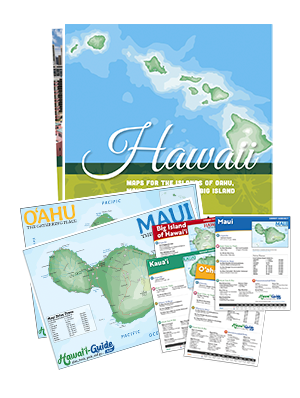
Download your copy of our... 2024 Hawaii Travel Guide
Hawaii-Guide.com has been featured in...

Hawaii Visitor Information...

Try out our new AI Powered Search & Chatbot →

Plus & Premium Benefits
Donate and remove ALL the ads
Mahalo for your support!
By donating to our small business, you accept and acknowledge the donation terms . Mahalo!
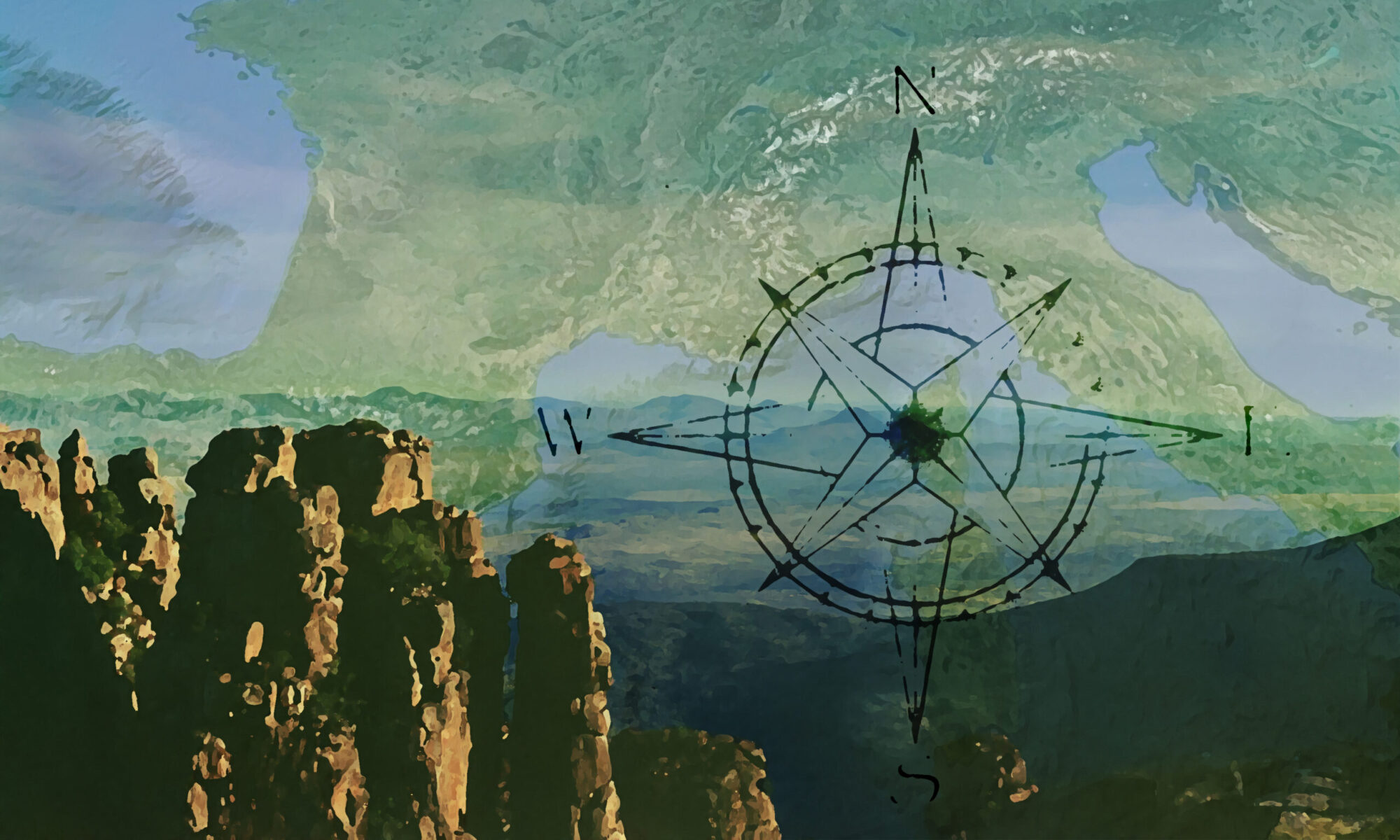
mytouristmaps.com
Travel & Tourist Maps, Utilities and Curiosities from the World
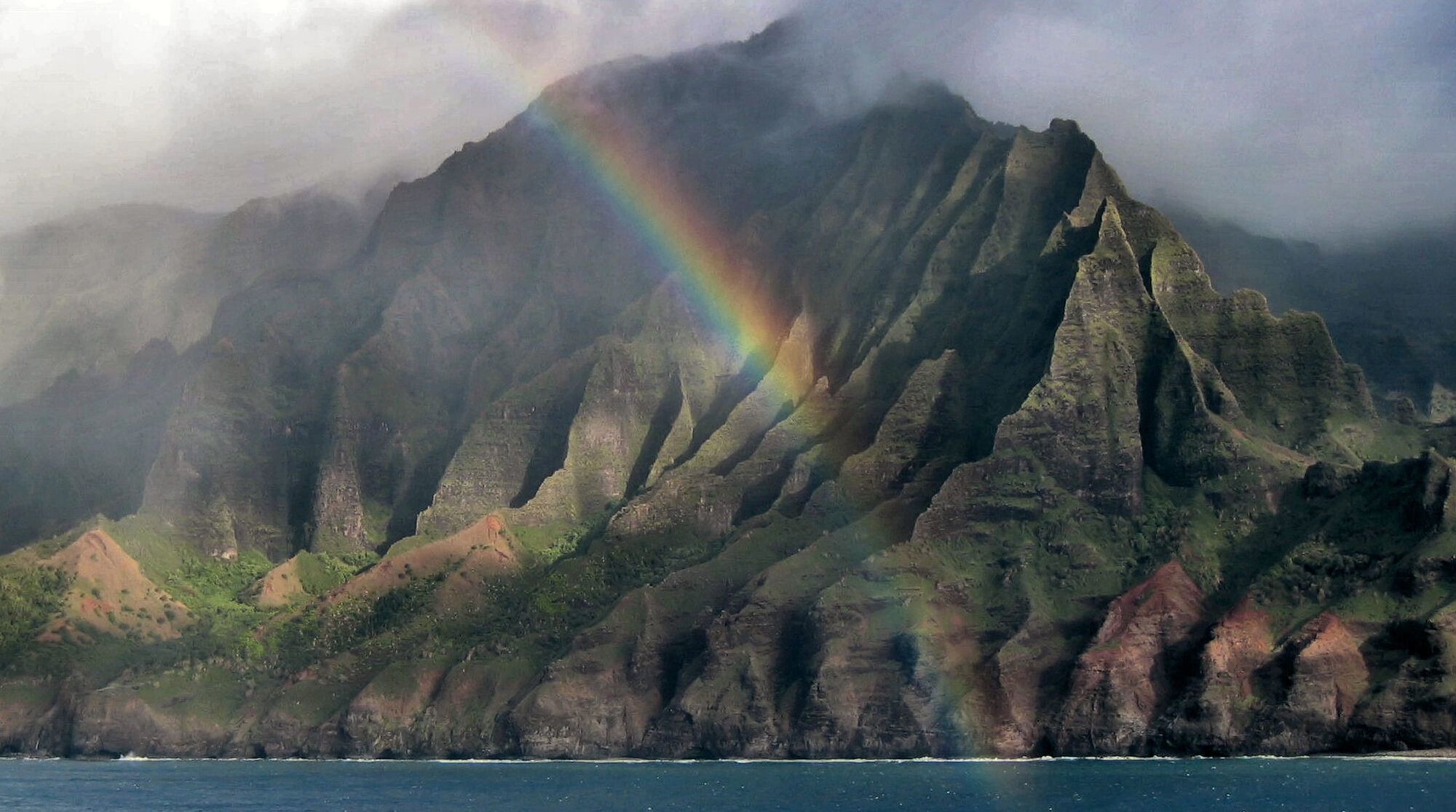
Tourist map of HAWAII
Interactive travel and tourist map of Hawaii: click on icons and writings on the map to open web links.
Not just because Jurassic Park movie was shot here, the Hawaiian scenery is a truly Jurassic world with the incredible beauty of steep green mountains that plunge into the sea, volcanoes, canyons, and heavenly beaches.
Hawaii (U.S.A.)
Population: 1.427.400 Area: 28.311 sq.km Official Languages: English, Hawaiian Currency: US Dollar Drivers Lane: Right When to go: All Year Book Now Climate Rent a Car Flights
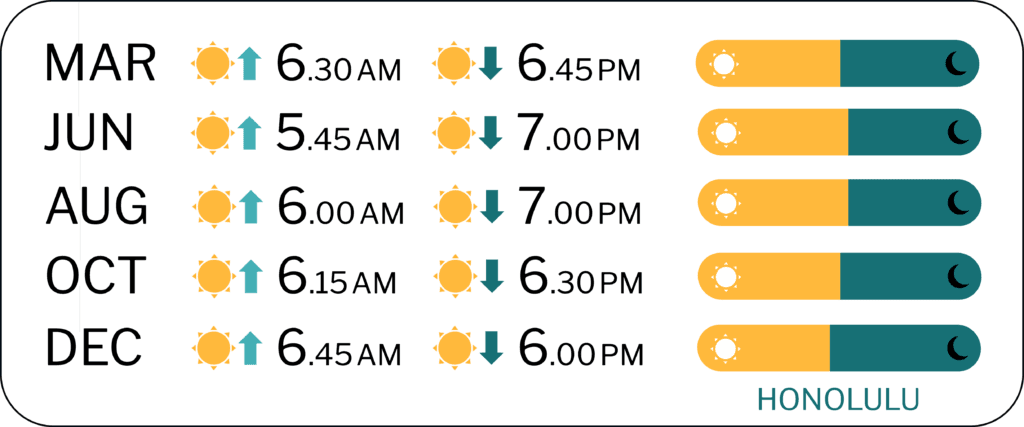
FURTHER LINKS Hawaii Info Guide
Discover Hawaii’s best attractions and top sights through our map! Which are the best places to visit in Hawaii? Simply click on the map’s links to be quickly redirected to images and useful websites for accommodation, activities, transport and much more.
photo © Pandora_60 (Na Pali) / Flickr
Privacy Overview

IMAGES
VIDEO
COMMENTS
There are now two options available for purchase below: Hawaii 2024 Maps Packet - $11.50. Hawaii Maps Packet + 2024 Guidesheets - $16.00. -File is prepared as a print-ready PDF document. Download Maps + Guidesheets. Download Maps Only.
Hawaii is made up of 137 islands, but only 7 of the 8 largest islands are inhabited. The 7 major Hawaiian islands are Oahu, Maui, Hawaii (Big Island), Kauai, Molokai, Lanai, and Niihau. Kahaoolawe is the 8th largest Hawaiian island, but it's against the law to visit unless you're there for a valid volunteer work opportunity.
Find maps of Hawaii and other useful information for navigating the islands during your visit. ... Eco-Tourism; Family Fun There's fun for all ages here. ... natural wonders and landscapes that look too beautiful to be real. Explore the island maps below to get a lay of the land before setting out on your journey. Island Maps & Info.
Consisting of a total of 137 islands and atolls, the Hawaiian archipelago is home to 8 major islands out of which 7 are inhabited; only 6 of these islands are accessible to tourists. These islands are Kauai, Maui (you probably would've heard this in Moana), Oahu, Lanai, Big Island Hawaii (yes, there's an island called Hawaii in Hawaii) and ...
Island of Hawaiʻi Maps & Geography. The island of Hawaiʻi is the largest island in the Hawaiian chain with climatic contrasts across its 6 main districts: the Hāmākua , Hilo , Puna , Kaʻū , Kona and Kohala. The island is 4,028 sq. miles, which is so big that the other Hawaiian Islands could fit on it nearly twice. Yet the island of ...
A Brief History of Hawaiian Island Maps. Let's embark on a journey through time, tracing the evolution of Hawaiian Island maps. From their inception to the present day, these maps have undergone numerous transformations. The earliest known map of the islands dates back to 1778, when Captain James Cook first sailed into Hawaii's waters. His ...
You'll find 7 maps including an island map with points of interest, a regional map, and five scenic driving tour maps with stops. Big Island Map with Points of Interest . Get the island basics with this general map. You'll find major points of interest like historic sites, popular beaches, national parks, hikes, cities, towns and airports.
Islands. Islands Overview; Kauaʻi Hawai'i's fourth largest island is called the "Garden Island."; Oʻahu The "Heart of Hawai'i" is home to Honolulu and much more.; Molokaʻi The island of Molokaʻi remains true to its island roots.; Lānaʻi Luxury and rugged nature blend on this enticing island.; Maui Quaint towns, farms and beautiful beaches await on the "Valley Isle."
Hawaii is a group of volcanic islands located in the central Pacific Ocean. Occupied by indigenous groups at first, the United States incorporated the region into a state in 1959. It consists of eight main islands and numerous smaller ones, with a total land area of 10,931 square miles. The islands are approximately 2,390 miles west of ...
Kauaʻi Maps & Geography. Kauaʻi, Hawaiʻi 's fourth largest island, is separated into five main regions: Līhuʻe, the East Side (Coconut Coast), the North Shore, the South Shore and the West Side. Occupying 552 square miles, Kauaʻi is circular in shape with lush, mountainous regions in its center and beaches covering almost half its shoreline.
Hawaii Maps. December 22, 2021. Shaka Guide. Planning your trip to Hawaii? Check out our island maps to find points of interest including, hikes, beaches and attractions as well as major cities and airports. Check for maps by island: Maui. Oahu. Big Island.
In the south, Kona District is the island's centre of tourism. Once the playground of Hawaiian royalty, this sun-washed town is crammed with boutiques, bars and hotels. Down by the waterfront, visitors can discover Hawaiian history at Hulihe'e Palace, built as a holiday home for Hawaiian royalty, and now a museum.
Below is map of Hawaiian islands with pictures of the best things to do on each of the major Hawaiian islands! The best island to visit for your first trip to Hawaii are Oahu, Maui, the Big Island, or Kauai. These are the 4 major tourist islands of Hawaii. See below for the clickable interactive version of the Hawaiian islands map!
If you are on your phone, also see tips for using the map on mobile below the interactive map! 👆 Map of where the Big Island is located in Hawaii. The major Hawaiian islands from north to south (west to east) are Kauai (Lihue), Oahu (Honolulu), Maui (Lahaina), and the Big Island. The interactive map is below. The Big Island travel planning ...
Maui Maps & Geography. Maui is separated into 5 distinct regions: West Maui, South Maui, Central Maui, Upcountry Maui and East Maui. The Hawaiian Islands are generally drier on the western, or leeward side, and wetter on the eastern, or windward side. Most Maui resorts can be found in sunny West Maui and South Maui while you can find the lush ...
Kaua'i Oahu Moloka'i Maui In-na'i Hawai'i KONA INT'L AIR ORT (KOA) Kohaia Häwl . Kapa/au 250 270 Honoka/a Pa/ auilo 'Õ1õkala Laupähoeho . Päpa/aloa
Updated Hawaii Travel Map Packet. Updated with new high-resolution maps of each main Hawaiian Island. Includes most major attractions per island, all major routes, airports, and a chart with estimated driving times for each island. Our dedicated Maui Map packet additionally includes both a Maui Beaches Map + our detailed Road to Hana Map.
Oʻahu Maps & Geography. Oʻahu is separated into 5 main areas: Honolulu, the North Shore, the Windward Coast, Central Oʻahu and the Leeward Coast. Note that world-famous Waikīkī is actually a neighborhood located in greater Honolulu. Oʻahu occupies 597 square miles and is the second oldest of the six Islands of Aloha, lying between Kauaʻi ...
Tourist map of HAWAII. Interactive travel and tourist map of Hawaii: click on icons and writings on the map to open web links. Not just because Jurassic Park movie was shot here, the Hawaiian scenery is a truly Jurassic world with the incredible beauty of steep green mountains that plunge into the sea, volcanoes, canyons, and heavenly beaches.